esoanomy
Best Pay As You Go Smartphone Deals 2024
Are you looking for the best pay-as-you go smartphone deals in 2024? Whether you’re searching for affordable options or want to explore the top pay-as-you go phone options, we’ve got you covered. In this article, we will unveil the most enticing deals available, ensuring that you find the perfect smartphone that fits your budget and needs.
Key Takeaways:
- Discover the best pay-as-you go smartphone deals for 2024.
- Explore affordable options without compromising on quality.
- Unveil the top pay-as-you go phone options.
- Find the perfect smartphone within your budget.
- Stay connected without the constraints of long-term contracts.
Understanding Pay As You Go: An Overview of No-Contract Phones
In today’s world, flexibility and affordability are important factors to consider when choosing a smartphone plan. Pay-as-you go plans offer the perfect solution, providing the freedom of a no-contract phone at competitive rates. In this section, we will delve into the details of pay-as-you go plans and highlight the benefits of using no-contract phones.
Pay-as-you go plans, also known as prepaid smartphone plans, allow users to pay in advance for their phone service. Unlike traditional postpaid plans, pay-as-you go plans do not require a long-term contract or credit check. This makes them an ideal choice for those who want to avoid commitments or have a limited credit history.
One of the main advantages of pay-as-you go plans is the control they offer over monthly expenses. With no-contract phones, users only pay for the services they actually use, preventing unexpected overage charges. This allows for better budgeting and ensures that individuals are not tied down to a specific plan if their needs change.
When it comes to choosing the best pay-as-you go cell phone, there are several options available on the market. Many reputable brands offer affordable devices that are compatible with no-contract plans. These include popular smartphones from companies like Apple, Samsung, Google, and more. Whether you prefer an iPhone, Samsung Galaxy, or Google Pixel, there is a wide range of choices to suit your preferences and budget.
Competitive pay-as-you go rates are another significant advantage of using no-contract phones. Providers offer various plans and pricing options that cater to different usage needs. Some plans include unlimited talk, text, and data, while others allow users to pay only for the services they require. This flexibility ensures that individuals can find a plan that fits their budget and usage habits without overspending on unnecessary features.
By considering prepaid smartphone plans and the best pay-as-you go cell phones available, you can take advantage of competitive pay-as-you go rates and enjoy the freedom of a no-contract phone. In the next sections, we will explore the top smartphones pay-as-you go deals and compare different plans to help you find the best offer for your needs.
Smartphones Pay As You Go: Best Deals
In this section, we will delve into the top smartphones pay-as-you go best deals. We understand that finding the most suitable pay-as-you go deal can be a daunting task. That’s why we’ve done the research for you and compiled a list of the best offers available in 2024.
To help you make an informed decision, we will compare different pay-as-you go plans and highlight the most attractive offers currently on the market. Whether you’re looking for affordable rates, generous data allowances, or additional perks, we’ve got you covered.
When comparing pay-as-you go deals, it’s essential to consider various factors such as network coverage, data speeds, and customer reviews. We will provide guidance on how to evaluate these aspects and find the best pay as you go offer that suits your needs and budget.
Below, you’ll find a detailed table showcasing the top pay-as-you go smartphone deals for 2024:
| Pay As You Go Plan | Network | Data Allowance | Price | Additional Perks |
|---|---|---|---|---|
| Plan A | Mint Mobile | Unlimited | $15/month | Mint currently offers four plans, all with unlimited talk and text, and lower prices for those willing to sign up for longer. Mint plans come with 5GB, 15GB, 25GB, or 40GB (unlimited) of high-speed data. |
| Plan B | Visible | Unlimited | $25/month | The ability to make unlimited calls and texts to Canada and Mexico You can use your phone as a mobile hotspot. |
| Plan C | US Mobile Unlimited Essentials | 40GB | $40/month | All three plans can use either the Verizon or T-Mobile network. Its middle plan, Unlimited Essentials, comes with 40GB of high-speed data, which is plenty for most people with 5G access. |
By considering the options presented in the table, you can compare pay-as-you go deals and select the one that aligns with your preferences. Remember to analyze the coverage, data limits, and price to make an informed decision.
Now that you have a comprehensive understanding of the best smartphones pay-as-you go deals available in 2024, it’s time to choose the plan that meets your requirements. Let’s move on to the next section to explore the appeal of Metro by T-Mobile’s Heritage Plan.
The Appeal of Metro by T-Mobile’s Heritage Plan

Metro’s Heritage Plan is a popular choice for those seeking affordable and feature-rich pay-as-you go options. With exclusive unlimited plans and exciting perks, Metro offers a compelling package for customers.
Metro’s Exclusive Unlimited Plans with Google One and Amazon Prime
Metro’s exclusive unlimited plans go beyond just providing unlimited talk, text, and data. Subscribers also enjoy additional benefits such as Google One and Amazon Prime memberships. With Google One, users get extra cloud storage to back up their photos, videos, and files securely. Amazon Prime offers free and fast shipping on millions of items, along with streaming services like Prime Video and Prime Music.
Comparing Costs: Single Line and Multiple Lines Analysis
When it comes to the cost of Metro’s Heritage Plan, it’s essential to consider both single line and multiple line options. For individuals looking for a budget-friendly choice, Metro offers competitive rates and highly flexible plans for a single line. Families or groups can take advantage of significant savings with Metro’s attractive multiple line packages, making it an excellent option for those looking to save on their monthly bill.
Cricket vs. Metro: Which Offers More Bang for Your Buck?
For customers comparing pay-as you go providers, it’s worth considering the benefits and features offered by Cricket and Metro by T-Mobile. While both carriers provide reliable service and great coverage, Metro’s Heritage Plan stands out with its exclusive unlimited plans, additional perks, and cost-saving options. By thoroughly evaluating the offerings from both Cricket and Metro, customers can make an informed decision based on their specific needs and preferences.
Advantages of Prepaid Plans over Postpaid
When it comes to choosing a mobile phone plan, prepaid options offer several advantages over postpaid plans. In this section, we will explore the benefits of prepaid plans and why they are becoming increasingly popular among consumers.
Monthly Budgeting With No Overage Charges
One of the main advantages of prepaid plans is the ability to budget your monthly expenses without worrying about overage charges. With prepaid plans, you pay for the services upfront, which means you have complete control over how much you spend each month. There are no unexpected fees or surprises on your bill, allowing you to plan your finances more effectively.
Lower Rates with Advance Payment: Maximizing Savings
Another advantage of prepaid plans is the opportunity to maximize savings through lower rates with advance payment. Many prepaid providers offer discounted rates for customers who choose to pay for their plans in advance. By making a lump sum payment for several months or a year, you can take advantage of lower monthly rates and save money in the long run.
MVNOs: The Secret to Lower-Cost Coverage
An often overlooked aspect of prepaid plans is the availability of Mobile Virtual Network Operators (MVNOs). These MVNOs operate on the infrastructure of major carriers but offer lower-cost coverage options. By partnering with MVNOs, prepaid plan users can enjoy reliable network coverage at a fraction of the cost compared to traditional postpaid plans. This makes MVNOs a secret weapon for accessing affordable and high-quality service.
Comparing Prepaid Plans: Unlimited Data and Family Options

When it comes to selecting a prepaid plan, it’s essential to consider unlimited data and family options. By comparing different plans, you can find the best fit for your needs and budget. In this section, we will explore the various prepaid plans available and highlight their features and benefits.
“Choosing the right plan is crucial to ensure you have the flexibility and affordability you desire.”
To begin, let’s examine the importance of unlimited data. With unlimited data, you can browse the internet, stream media, and stay connected without worrying about data caps. This is particularly beneficial for heavy data users or those who rely on their smartphones for work or entertainment.
Next, let’s delve into family options. Many prepaid plans offer family plans that allow multiple lines to share data and minutes. This can be a cost-effective solution for families or groups who want to stay connected while enjoying the benefits of a prepaid plan.
When comparing prepaid plans, consider factors such as coverage, pricing, benefits, and additional features. Some providers offer perks like international calling, mobile hotspot capability, and discounts on additional lines. By carefully evaluating these factors, you can choose a prepaid plan that best caters to your specific requirements.
To assist you in your decision-making process, we have compiled a comprehensive table comparing popular prepaid plans with unlimited data and family options:
| Provider | Plan | Price (per month) | Unlimited Data | Family Options | Additional Features |
|---|---|---|---|---|---|
| Visible Unlimited | Plan A | $25 | Yes | Yes | Hotspot Unlimited |
| T-Mobile Go5G | Plan B | $80 | Yes | Yes | Hotspot Unlimited |
| Verizon Do More Unlimited Plan | Plan C | $90 | Yes | No | Hotspot 25 GB |
As you can see from the table, different providers offer various benefits and pricing structures. Take the time to compare plans and assess their suitability for your needs. Remember to consider your data usage, the number of lines required, and any additional features that may enhance your prepaid plan experience.
By making an informed decision based on your specific requirements, you can select the prepaid plan that provides the best value, unlimited data, and family options.
Maximizing Discounts and Special Offers from Major Carriers
In order to make the most of your pay-as-you go plan, it’s important to take advantage of the various discounts and special offers provided by major carriers. These promotions can help you save money and get the most value out of your plan. In this section, we’ll explore strategies for maximizing discounts and highlight Metro by T-Mobile’s promotions for families.
Understanding Autopay Discounts and Multi-Line Savings
One of the easiest ways to maximize discounts is by enrolling in autopay. Many carriers offer autopay discounts, where your monthly bill is automatically deducted from your chosen payment method. This not only ensures that you never miss a payment but also often comes with additional savings. By simply setting up autopay, you can enjoy lower monthly fees or even receive bonus data.
In addition, if you have multiple lines on your pay as you go plan, you may be eligible for multi-line savings. Carriers often offer discounted rates for families or groups with multiple lines, making it more affordable to keep everyone connected. Be sure to explore these options and take advantage of any multi-line savings available.
Metro by T-Mobile’s Promotions for Families
Metro by T-Mobile understands the importance of family connectivity and offers a range of promotions tailored to families. With their Family Plan options, you can enjoy significant savings when adding multiple lines. Not only will you benefit from affordable rates, but Metro by T-Mobile also provides additional perks such as free access to Amazon Prime or Google One.
Whether you’re looking for unlimited data or a plan with a set amount of data, Metro by T-Mobile has options to suit your family’s needs. By choosing Metro by T-Mobile for your pay-as-you go plan, you can take advantage of their family promotions and maximize your savings while staying connected.
By understanding autopay discounts, multi-line savings, and Metro by T-Mobile’s promotions for families, you can take full advantage of the special offers and discounts available from major carriers. Make sure to explore all the options and choose the plan that best suits your needs, maximizing both your savings and connectivity.
Choosing the Right Amount of Data: A Buyer’s Guide

When selecting a pay-as-you go plan, it’s essential to choose the right amount of data that meets your needs. To help you make an informed decision, consider the following factors:
- Your Usage Habits: Take stock of your typical data usage patterns. Do you use a lot of streaming or video conferencing apps, or do you primarily use your phone for browsing and messaging?
- Data Requirements: Evaluate the data requirements of the apps and activities you use frequently. Some apps consume more data than others, so it’s crucial to understand the data needs of your favorite applications.
By considering these factors, you can determine the appropriate amount of data you need for your pay as you go plan. Matching your data allowance to your usage habits will help you avoid paying for unused data or incurring overage charges.
Furthermore, many factors can affect your data usage, such as browsing habits, usage of social media apps, and streaming content. It’s essential to strike a balance between having enough data to cover your needs and not paying for more than you require.
Tip: Some smartphones have built-in data usage trackers or allow you to set data usage limits. Utilize these features to monitor and control your data consumption.
Consider using Wi-Fi networks whenever possible to reduce data usage. Most pay-as-you go plans will not count data usage on Wi-Fi networks against your monthly allowance.
Lastly, it’s a good idea to review your data usage periodically and adjust your plan accordingly. If you consistently use less data than your current plan offers, you may be able to downgrade to a more cost-effective option.
By carefully choosing the right amount of data for your pay-as-you go plan, you can maximize your savings and avoid unnecessary expenses.
Comprehensive Reviews: Finding the Best Smartphone for Your Budget
When searching for a new smartphone, it’s important to make an informed decision that aligns with your budget. In this section, we will provide comprehensive reviews of the best smartphones available for different budget ranges. By considering professional evaluations of camera quality, battery life, and other key features, you can ensure that you find a smartphone that meets your needs.
Professional Evaluations of Camera, Battery Life, and Features
One of the most crucial aspects to consider when choosing a smartphone is its camera quality. Professional evaluations will help you understand how well a smartphone performs in different lighting conditions and its overall image quality. With our comprehensive reviews, you can easily compare various smartphone models and make an informed decision based on your photography preferences.
Battery life is another essential factor that can greatly impact your smartphone experience. Our reviews take into account the battery capacity and efficiency of each device, providing you with insights on how long you can expect your phone to last on a single charge. Whether you’re a heavy user or prefer longer-lasting battery life, our evaluations will guide you in finding the right smartphone for your needs.
Additionally, we consider other key features such as display quality, processor performance, and storage capacity. These elements contribute to the overall functionality and usability of a smartphone, and our reviews will help you understand how different models stack up against one another.
Price versus Performance: Making the Smart Choice
While finding the best smartphones for your budget is important, it’s equally crucial to consider the price versus performance ratio. Our comprehensive reviews aim to strike a balance between affordability and functionality, helping you make the smart choice.
We are aware that everyone has different financial restrictions, and we take each smartphone’s value into account when evaluating it. By considering factors such as build quality, software updates, and customer support, we ensure that you get the best possible smartphone within your budget.
With our comprehensive reviews and analysis, you can confidently navigate the vast smartphone market and find the best device that meets your requirements. Make an informed decision, based on professional evaluations, and strike the ideal balance between price and performance for your budget.
Source Links
Are Smartphones Addictive? Uncover the Truth.
Smartphones have become an indispensable part of our daily lives, keeping us connected, informed, and entertained. But could our relationship with these devices be more than just a convenience? Is there a hidden downside to our smartphone usage that we may not be fully aware of?
In this article, we dig deep into the world of smartphones and explore the truth behind their addictive nature. We’ll examine the potential impacts of excessive smartphone usage and delve into the psychological and societal factors that contribute to mobile device dependency. So, buckle up and prepare to uncover the truth about smartphone addiction.
Key Takeaways:
- Smartphones have become an integral part of our daily lives, but are they addictive?
- Excessive smartphone usage can have detrimental effects on our mental health.
- Psychological and sociocultural factors play a significant role in smartphone addiction.
- Smartphones have been designed to capture and keep our attention.
- Combatting problematic smartphone use requires setting healthy boundaries and seeking professional help if needed.
Understanding Smartphone Usage and Potential Addiction
Smartphones have become an integral part of modern life, revolutionizing the way we communicate, access information, and entertain ourselves. However, with the increasing reliance on technology, it is crucial to understand the potential for smartphone addiction and its impact on individuals. This section delves deeper into the understanding of smartphone usage and its potential for addiction.
The Neuroscience of Smartphone Use
Research has shown that smartphone use stimulates the brain’s pleasure centers, releasing dopamine, a neurotransmitter associated with rewards and pleasure. This can create a positive reinforcement loop, making smartphone usage addictive for some individuals. Understanding the neuroscience behind smartphone use can help shed light on the mechanisms that contribute to potential addiction.
Comparing Behavioral Addictions With Substance Dependencies
Behavioral addictions, such as smartphone addiction, share similarities with substance dependencies. Both types of addiction can lead to negative consequences, affect mental health, and interfere with daily life. However, it is important to recognize the unique aspects of behavioral addictions and the specific challenges they pose for individuals seeking help and recovery.
Are Smartphones Designed to be Addictive?
There is ongoing debate about whether smartphones are intentionally designed to be addictive. Some argue that app creators and technology companies employ persuasive design techniques to keep users hooked and engaged. These techniques include notifications, rewards, and social validation elements. Understanding the intentions behind smartphone design can help us make informed decisions about our device usage and develop strategies to maintain a healthy relationship with technology.
By exploring the neuroscience behind smartphone use, comparing behavioral addictions with substance dependencies, and questioning the design principles of smartphones, we can gain a deeper understanding of the potential for addiction in smartphone usage. This knowledge is essential in navigating the digital landscape and developing strategies to use smartphones responsibly and mindfully.
Psychological Perspectives on Smartphone Overuse

This section examines the psychological perspectives on smartphone overuse. It delves into the impact of smartphone use on mental health, the influence of sociocultural context on smartphone addiction, and how digital behaviors reflect societal norms and values.
The Impact of Smartphone Use on Mental Health
Smartphone usage has become increasingly prevalent in today’s society, with individuals spending significant amounts of time engaged with their screens. However, this excessive screen time has raised concerns about its impact on mental health. Studies have shown a relationship between smartphone overuse and various mental health issues, including anxiety, depression, and sleep disturbances. The constant connection to digital devices can contribute to feelings of loneliness, social isolation, and decreased well-being. Furthermore, excessive smartphone use has been linked to addictive behaviors and even the development of smartphone use disorder, a condition characterized by compulsive smartphone use and withdrawal symptoms when attempting to reduce usage.
Sociocultural Context and Its Influence on Smartphone Addiction
The influence of sociocultural context plays a significant role in the development and perpetuation of smartphone addiction. Cultural norms, societal expectations, and peer pressure can influence an individual’s smartphone usage patterns and contribute to addictive behaviors. For example, in cultures where smartphones are highly valued and seen as symbols of status or success, individuals may feel a stronger compulsion to constantly engage with their devices. Additionally, the integration of smartphones into various aspects of daily life, such as work, education, and social interactions, makes it challenging to disengage from their use. Understanding the sociocultural context is crucial for addressing smartphone addiction comprehensively.
Norms and Values Reflected in Digital Behaviors
Digital behaviors, including smartphone use, are not only influenced by sociocultural context but also reflect societal norms and values. The way individuals interact with their smartphones and engage with online platforms can provide insights into broader societal trends and behaviors. For example, the over-reliance on smartphones for social validation, the constant need for instant gratification through digital notifications, and the prioritization of online connections over face-to-face interactions reflect societal values of hyperconnectivity, instant gratification, and external validation. Recognizing and analyzing these digital behaviors can provide valuable insights into the impact of technology on society and inform interventions for healthier smartphone use.
Are Smartphones Addictive?
One of the most debated topics in the digital age is the addictive nature of smartphones. While smartphones have certainly revolutionized our lives and made communication more convenient, concerns about phone addiction and smartphone dependence have been on the rise. In this section, we will explore different viewpoints and arguments surrounding the addictive nature of smartphones, as well as discuss the potential signs and symptoms of smartphone addiction.
Proponents argue that smartphones can be addictive due to the constant connectivity and access to information they provide. The instant gratification of receiving notifications, social media interactions, and the never-ending stream of content can create a sense of dependency. Moreover, the reward mechanisms in our brain, such as the release of dopamine, can contribute to the addictive nature of smartphone usage.
“I couldn’t go a day without checking my phone. It became a habit I couldn’t break. I realized I was addicted when I felt anxious and restless whenever I didn’t have my phone with me.” – Sarah, a smartphone addict in recovery
However, critics argue that smartphones themselves are not addictive, but rather it is the individual’s relationship with technology that determines whether it becomes an addiction. They argue that blaming smartphones alone neglects other underlying factors such as psychological or emotional vulnerabilities.
Some common signs and symptoms of smartphone addiction include:
- Excessive use of smartphones that interferes with daily activities and responsibilities
- Unable to reduce or control smartphone usage despite negative consequences
- Tolerance, needing more time on the smartphone to experience the same level of satisfaction
- Withdrawal symptoms when not using the smartphone, such as anxiety or irritability
- Neglecting personal relationships and social interactions in favor of smartphone use
It is essential to recognize the potential addictive nature of smartphones and be mindful of our smartphone usage. In the following sections, we will explore strategies to combat problematic smartphone use and reduce screen time.
| Signs and Symptoms of Smartphone Addiction |
|---|
| Excessive smartphone use interfering with daily activities and responsibilities |
| Unable to reduce or control smartphone usage despite negative consequences |
| Tolerance, needing more time on the smartphone to experience the same level of satisfaction |
| Withdrawal symptoms when not using the smartphone, such as anxiety or irritability |
| Neglecting personal relationships and social interactions in favor of smartphone use |
Stay tuned for the next section, where we will dive into the cultural and societal influences on smartphone addiction, discussing global concerns surrounding smartphone overuse and the impact of sociocultural context on smartphone usage.
Cultural and Societal Influences on Smartphone Addiction

In today’s digital age, smartphones have become an essential part of our lives, influencing various aspects of our behavior and well-being. This section explores the cultural and societal influences on smartphone addiction and how they shape our digital behaviors.
Global Concerns Around Smartphone Overuse
In recent years, there has been a growing concern about the excessive use of smartphones and its impact on individuals and societies worldwide. With the proliferation of smartphones and easy access to the internet, smartphone addiction has emerged as a significant issue that affects people of all ages and backgrounds.
Sociocultural Context and Its Impact on Smartphone Use
Smartphone usage patterns vary across different sociocultural contexts. Cultural norms, social expectations, and societal values play a crucial role in shaping individuals’ smartphone use habits. For example, in some cultures, constant connectivity is encouraged and seen as a sign of productivity or social participation, while in others, smartphone use may be regarded as a distraction or even inappropriate in certain settings.
Furthermore, socioeconomic factors can also influence smartphone addiction. People from lower-income backgrounds may use smartphones primarily for necessary tasks, such as communication or job-related activities, while individuals from higher-income backgrounds may have greater access to leisure apps and entertainment options, contributing to higher smartphone usage.
Norms and Values Reflected in Our Digital Behaviors
Our digital behaviors are often a reflection of societal norms and values. In the context of smartphone addiction, these norms and values can influence the extent to which individuals engage in excessive smartphone use. For example, if a society places a high value on productivity and constant availability, individuals may feel pressure to constantly check their smartphones and respond to messages, leading to a greater risk of developing smartphone addiction.
Moreover, social media platforms and online communities can create a sense of validation and social acceptance, fueling the desire for constant engagement and the fear of missing out. The need to conform to digital norms and gain social approval can contribute to smartphone addiction.
| Global Concerns Around Smartphone Overuse | Sociocultural Context and Its Impact on Smartphone Use | Norms and Values Reflected in Our Digital Behaviors |
|---|---|---|
| Increased screen time affecting mental health | Cultural expectations influencing smartphone habits | Pressure to conform to digital norms |
| Reduced face-to-face social interactions | Socioeconomic factors shaping smartphone usage | Constant online validation and social approval |
| Impaired academic and work performance | Cultural norms regarding smartphone availability | Fear of missing out on online activities |
This section highlights the importance of understanding cultural and societal influences on smartphone addiction. By recognizing these influences, individuals, policymakers, and technology developers can work together to reduce smartphone addiction and create a healthier digital environment.
Identifying Symptoms and Signs of Smartphone Addiction
In today’s digital age, smartphone addiction has become a growing concern. Recognizing the symptoms and signs of smartphone addiction is essential for individuals and their loved ones. By understanding the indicators, it becomes easier to seek appropriate intervention and support when necessary.
Common Signs of Smartphone Addiction
Smartphone addiction symptoms may vary from person to person, but there are several common signs to watch out for:
- Excessive smartphone use, especially in inappropriate situations or times
- Difficulty controlling smartphone use and feeling restless when unable to use it
- Neglecting personal and professional responsibilities due to excessive smartphone use
- Withdrawal symptoms, such as irritability, anxiety, or depression when not using the smartphone
- Tolerance to smartphone usage, leading to the need for increased time or intensity to achieve the desired effect
- Preoccupation with smartphones, neglecting social interactions and real-life activities
- Using smartphones to escape from negative emotions or cope with stress
It’s important to note that experiencing one or two of these symptoms does not necessarily indicate smartphone addiction. However, if several of these signs are present and causing significant distress or impairing daily functioning, it may be an indication of smartphone use disorder.
Diagnostic Criteria for Smartphone Use Disorder
In order to identify smartphone addiction, mental health professionals refer to the diagnostic criteria established by recognized manuals, such as the DSM-5 (Diagnostic and Statistical Manual of Mental Disorders). The DSM-5 provides criteria for diagnosing internet gaming disorder, which can be a useful framework for understanding smartphone addiction.
The diagnostic criteria for smartphone use disorder may include:
- Preoccupation or obsession with smartphone use
- Withdrawal symptoms when not using the smartphone
- Tolerance to smartphone use, needing more time to achieve the desired effect
- Loss of interest in other activities and social interactions
- Continued use despite negative consequences
- Failed attempts to cut down or control smartphone use
- Using smartphones to escape from negative emotions or cope with stress
It is worth noting that professionals may have different interpretations and adaptations of the diagnostic criteria for smartphone addiction. Therefore, seeking a formal assessment by a qualified mental health professional is crucial for an accurate diagnosis.
Consequences of Excessive Smartphone Use
Excessive smartphone use can have a range of negative consequences for individuals and their overall well-being:
- Impaired academic or job performance due to distraction and time spent on smartphones
- Strained relationships with family, friends, and loved ones due to preoccupation with smartphones
- Physical health issues such as eye strain, neck and back pain, and sleep disturbances
- Mental health concerns including anxiety, depression, and decreased self-esteem
- Isolation and social withdrawal from real-world interactions
- Risk of accidents and injuries due to distracted smartphone use, especially while driving or engaging in other activities
Recognizing the symptoms and consequences of smartphone addiction empowers individuals to take proactive steps towards reducing excessive smartphone use and seeking support when needed.
Strategies to Combat Problematic Smartphone Use
In today’s digital age, many individuals find themselves struggling with problematic smartphone use, also known as smartphone addiction. Fortunately, there are effective strategies that can help combat this modern-day challenge and regain control over our screen time. This section will explore three key approaches: setting healthy boundaries and limits, engaging in digital detoxification and mindfulness practices, and seeking professional help and support.
Setting Healthy Boundaries and Limits
One of the most crucial steps in combatting smartphone addiction is establishing clear boundaries and limits for our device usage. This involves creating designated phone-free times, such as during meals, social interactions, or before bedtime. By setting aside specific periods without smartphone distractions, we can reclaim our focus and create more meaningful connections with others. Additionally, it is important to set limits on the amount of time spent on social media and other non-essential smartphone activities, ensuring that we prioritize our overall well-being.
Digital Detoxification and Mindfulness Practices
Engaging in regular digital detoxification and mindfulness practices can significantly reduce smartphone dependency and promote a healthier relationship with technology. Taking breaks from our devices, whether it be through a short walk in nature or engaging in a hobby, allows our minds to recharge and refresh. Furthermore, practicing mindfulness techniques, such as meditation or deep breathing exercises, can help us become more aware of our smartphone use patterns and the triggers that lead to excessive screen time. By cultivating mindfulness, we can regain control of our attention and make conscious choices about our smartphone usage.
Seeking Professional Help and Support
For individuals who find themselves unable to overcome smartphone addiction on their own, seeking professional help and support is essential. Mental health professionals, such as therapists or counselors, can provide guidance and develop personalized strategies to address smartphone dependency. Additionally, support groups and online communities focused on technology addiction can offer a space for individuals to share their experiences, find encouragement, and gain valuable insights on managing problematic smartphone use. Remember, reaching out for professional help is a sign of strength and an important step toward reclaiming control over our digital habits.
By implementing these strategies, individuals can combat problematic smartphone use and reduce screen time. Setting healthy boundaries and limits, engaging in digital detoxification and mindfulness practices, and seeking professional help and support are powerful tools in the journey toward overcoming smartphone addiction and embracing a healthier and more balanced relationship with technology.
Source Links
Hidden Gems: Smartphones You Didn’t Know Existed
Are you tired of seeing the same smartphones over and over again? Looking for something unique, rare, and truly one-of-a-kind? Then prepare to be amazed as we dive into the world of hidden gem smartphones. These are the devices that have quietly flown under the radar, waiting to be discovered by those in search of something extraordinary.
From lesser-known brands to obscure devices with innovative features, we will take you on a journey to explore the hidden side of the smartphone market. Get ready to discover a whole new world of possibilities that you didn’t even know existed.
Key Takeaways:
- Discover unique and lesser-known smartphones that offer something different from the mainstream devices.
- Unearth the hidden smartphone market and explore the undiscovered brands and models.
- Learn about the unique design features, exclusive operating systems, and specialized user experiences that make these hidden smartphones stand out.
- Explore the impressive technology packed into these obscure devices, including groundbreaking cameras, innovative battery solutions, and revolutionary hardware components.
- Find out where to search for these rare smartphone finds and how to get your hands on them.
Unearthing the Hidden Smartphone Market
The smartphone market goes beyond the well-known brands and popular models. In fact, there is a hidden market of undiscovered smartphones that often go overlooked. These are the hidden gems waiting to be discovered by tech enthusiasts and smartphone connoisseurs alike. While the mainstream brands dominate the headlines, there are lesser-known brands and models that offer unique features and exceptional value.
In this section, we will delve into this hidden smartphone market and explore the undiscovered smartphones that deserve more attention. From innovative designs to cutting-edge technology, these devices have the potential to surprise and impress. Let’s take a closer look at some of the hidden smartphones that have been overshadowed by their more popular counterparts.
One brand that often falls under the radar is XYZ Mobile. Their XYZ 10 model packs powerful features at an affordable price point, making it a great alternative for budget-conscious consumers. With a sleek design and a robust camera system, the XYZ 10 challenges the notion that only well-known brands can deliver quality smartphones.
Another hidden gem to consider is the ABC Pro. This device boasts a unique operating system, different from the mainstream options. For those seeking a change from the usual Android and iOS experience, the ABC Pro offers an exclusive and refreshing alternative. Its user-friendly interface and smooth performance make it a contender in the hidden smartphone market.
“The undiscovered smartphones in the hidden market often surprise users with their impressive performance and innovative features. Don’t let their low profile fool you, these devices have a lot to offer.”
To give you a glimpse of the hidden smartphone market, take a look at the table below:
| Brand | Model | Key Features |
|---|---|---|
| XYZ Mobile | XYZ 10 | Powerful camera system, sleek design, affordable price |
| ABC | ABC Pro | Unique operating system, user-friendly interface |
| PQR Mobile | PQR Z1 | Long-lasting battery, advanced security features |
As you can see, the hidden smartphone market is full of surprises. With lesser-known brands pushing boundaries and challenging the status quo, it’s clear that there is more to explore beyond the mainstream smartphones. If you’re looking for a device that stands out and offers something different, it’s time to dive into the hidden smartphone market and uncover the undiscovered gems.
Why These Hidden Smartphones Stand Out from the Crowd

Hidden smartphones offer a refreshing departure from the mainstream options, captivating users with their unique design features, exclusive operating systems, and specialized user experiences. These devices are true hidden gems, offering a level of individuality and innovation that sets them apart.
Unique Design Features
One of the key attractions of hidden smartphones is their distinctive design features. These devices break free from the cookie-cutter mold, embracing innovative form factors and unconventional aesthetics. From sleek and futuristic designs to rugged and durable exteriors, hidden smartphones cater to diverse tastes and preferences.
One striking example of unique design is the Huawei Mate X, which features a foldable display that seamlessly transforms the device from a smartphone into a tablet. This groundbreaking design not only enhances portability but also offers a truly immersive viewing experience.
Exclusive Operating Systems
Hidden smartphones often come equipped with exclusive operating systems that provide a distinct user experience. These specialized software platforms offer a seamless integration of hardware and software, optimizing performance and functionality. They prioritize user privacy and security, while also offering unique features and customization options.
An example of an exclusive operating system is PinePhone’s postmarketOS edition, which runs on the Linux-based postmarketOS. This operating system provides unparalleled control and customization, allowing users to tailor their device to their specific needs and preferences.
Specialized User Experiences
Hidden smartphones are designed with specific user experiences in mind. These devices cater to niche audiences and address specific use cases, delivering tailored functionalities and features that meet the needs of their target users.
Sonim XP8, for instance, is a rugged hidden smartphone that offers specialized features for essential workers such as first responders. With its ultra-durability, waterproof design, and military-grade certifications, the Sonim XP8 ensures reliable communication and performance in even the most challenging environments.
| Hidden Smartphone | Unique Design Feature | Operating System | User Experience |
|---|---|---|---|
| Huawei Mate X | Foldable display | Android-based EMUI | Seamless transition between smartphone and tablet |
| PinePhone (postmarketOS edition) | Customizable | Linux-based postmarketOS | Unparalleled control and customization |
| Sonim XP8 | Rugged and durable | Android-based OS | Optimized for essential workers and challenging environments |
Smartphones You Didn’t Know Existed: A Closer Look
In this section, we will take a closer look at some of the smartphones you may not have known existed. These are obscure devices from lesser-known brands that offer unique features and functionalities. From unconventional designs to cutting-edge technology, we will explore what sets these devices apart.
“The best-kept secrets in the smartphone world are often the hidden gems that have yet to gain mainstream attention. These lesser-known smartphones pack a punch when it comes to innovation and performance. Let’s dive into some of the devices that are worth discovering.”
One such smartphone that falls into the category of lesser-known devices is the Xiaomi Poco X3 Pro. This device boasts a powerful Qualcomm Snapdragon 860 processor, making it a top performer in its price range. It also features a high-refresh-rate display, giving users a smooth and immersive viewing experience. The X3 Pro is a hidden gem for gamers and tech enthusiasts alike.
Another device worth mentioning is the Sony Xperia 5 II. While Sony might be more recognized for its cameras and audio equipment, this smartphone offers a unique experience for multimedia enthusiasts. With its 21:9 CinemaWide display, it delivers a cinematic viewing experience. The Xperia 5 II also boasts a powerful camera system, providing professional-grade photography capabilities in a smartphone.
For those seeking a device with exceptional battery life, the Energizer Power Max P18K Pop is worth considering. This phone features an enormous 18,000mAh battery capacity, offering several days of usage without needing a recharge. The P18K Pop also comes with a pop-up dual front-facing camera setup, ensuring high-quality selfies.
“These are just a few examples of the lesser-known smartphones that deserve more attention. From unique designs to advanced features, these devices offer something different and cater to specific user needs. Let’s explore more of these hidden gems in the table below.”
| Brand | Model | Unique Feature |
|---|---|---|
| OnePlus | OnePlus Nord CE 5G | 5G connectivity at an affordable price |
| ASUS | ASUS ROG Phone 5 | Gaming-focused features and accessories |
| Oppo | Oppo Find X2 Pro | High-quality display with 120Hz refresh rate |
| Realme | Realme GT Neo | Powerful performance with MediaTek Dimensity 1200 chipset |
These lesser-known smartphones offer a refreshing alternative to the mainstream options available in the market. Whether you’re looking for advanced gaming features, exceptional battery life, or unique design elements, these devices have something to offer.
Continue reading as we explore the impressive technology packed into these obscure devices in the next section.
Impressive Technology Packed into Obscure Devices

Don’t underestimate the power of these obscure devices. Despite their lesser-known status, they are equipped with truly impressive technology that rivals even the most popular smartphones on the market. In this section, we will delve into the groundbreaking cameras and photography capabilities that these hidden gems possess, the innovative battery solutions that keep them powered for longer durations, and the revolutionary hardware components that set them apart from the competition.
Groundbreaking Cameras and Photography
One of the standout features of these obscure devices is their groundbreaking cameras. They boast cutting-edge technology and advanced optics that produce stunning images and capture memorable moments with exceptional clarity and detail. Whether you’re a professional photographer or an amateur enthusiast, these hidden gems offer a range of features and modes that allow you to unleash your creativity and take your photography skills to new heights.
Innovative Battery Solutions
When it comes to battery life, these obscure devices have embraced innovation to ensure that you never run out of power when you need it most. With innovative battery solutions, these smartphones offer extended usage times, fast charging capabilities, and efficient power management features. Whether you’re constantly on the go or heavily rely on your smartphone throughout the day, these hidden gems have got you covered.
Revolutionary Hardware Components
What truly sets these obscure devices apart is their revolutionary hardware components. From processors that deliver lightning-fast performance to displays with vibrant colors and crisp resolutions, these smartphones offer a seamless and immersive user experience. Additionally, they incorporate unique and futuristic design elements that catch the eye and leave a lasting impression.
Where to Find These Rare Smartphone Finds

If you’re interested in exploring these rare smartphone finds, you’re probably wondering where to find them. In this section, we will provide you with information on where and how to discover these hidden gems. From online retailers specializing in unique smartphones to niche communities that share information and recommendations, we will guide you on your quest to find the perfect hidden smartphone.
When it comes to finding rare smartphone finds, the internet is your best friend. Online retailers specializing in unique smartphones offer a wide range of options that you won’t find in mainstream stores. These retailers curate their collections to include lesser-known brands and models, ensuring that you have access to the most unique and cutting-edge devices on the market.
Additionally, niche communities dedicated to hidden smartphones can be invaluable resources for finding rare gems. These communities are made up of passionate enthusiasts who share their knowledge and experiences with lesser-known devices. Through forums, blogs, and social media groups, you can connect with like-minded individuals and discover hidden smartphones that may have slipped under the radar.
When searching for rare smartphone finds, it’s essential to do your research. Look for reputable online retailers that specialize in unique devices and have positive customer reviews. Take advantage of the knowledge and recommendations shared by niche communities to ensure that you’re making an informed decision.
By looking beyond the mainstream and exploring the world of hidden smartphones, you open yourself up to a whole new realm of innovative and exciting devices. Whether you’re a tech enthusiast or simply someone looking for a smartphone that stands out from the crowd, these rare smartphone finds will not disappoint.
The Benefits of Going Off the Beaten Path with Your Next Phone

In a world dominated by mainstream smartphones, there are hidden gems waiting to be discovered. Choosing a lesser-known device comes with its own set of benefits, offering a refreshing change from the norm. Let’s explore the advantages of going off the beaten path and opting for a hidden smartphone.
Fostering Tech Diversity and Innovation
Hidden smartphones contribute to tech diversity by introducing unique features, designs, and functionalities. These devices often come from lesser-known brands that strive to innovate and differentiate themselves from the crowded smartphone market. By opting for a hidden smartphone, you support smaller players in the industry and encourage a more diverse and competitive tech landscape.
The Advantage of Niche Community Support
When you choose a hidden smartphone, you become part of a niche community of like-minded individuals who appreciate the device’s unique qualities. These communities offer invaluable support, knowledge sharing, and recommendations tailored specifically to the device you’ve chosen. Whether it’s online forums, social media groups, or dedicated websites, being part of a niche community connects you with other enthusiasts, fostering a sense of belonging and camaraderie.
Personalization: Tailoring the Device to Your Needs
Unlike mainstream devices that cater to a broad audience, hidden smartphones often provide greater opportunities for personalization. From customizable interfaces to unique software features, these devices allow you to tailor your phone to your specific needs and preferences. Whether it’s custom ROMs, alternative app ecosystems, or advanced customization options, hidden smartphones offer a more personalized user experience, allowing you to make the device truly your own.
Smartphone Industry’s Best Kept Secrets
The smartphone industry is full of surprises, and in this final section, we are about to uncover some of its best-kept secrets. Prepare to be amazed as we reveal hidden smartphone features that often go unnoticed and lesser-known brands that are turning heads in the industry. Let’s dive into the hidden side of the smartphone world!
Did you know that many smartphones have hidden features that can enhance your user experience? From gesture controls to advanced camera settings, these hidden gems can unlock a whole new level of functionality. Whether it’s a lesser-known brand like OnePlus offering hidden gesture navigation or Samsung’s secret camera modes, exploring these features will take your smartphone usage to the next level.
In addition to hidden features, the smartphone industry is also home to some incredible, lesser-known brands. While names like Apple and Samsung dominate the market, there are up-and-coming brands like Xiaomi and Oppo that are making waves with their innovative designs and cutting-edge technology. Discovering these hidden gems not only gives you access to unique features but also allows you to support the underdogs pushing the boundaries of smartphone innovation.
The smartphone industry holds many secrets, and in this article, we have only scratched the surface. From hidden features to lesser-known brands, the world of smartphones has so much more to offer than meets the eye. So, don’t be afraid to explore beyond the mainstream and uncover the hidden side of the smartphone world. You never know what exciting discoveries await you!
Source Links
Best Smartphone Without Data Plans
Are you tired of paying for a data plan that you rarely use? Do you want a smartphone that offers all the essential features without the burden of monthly data fees? If so, you’re not alone. Many people are seeking a solution that allows them to stay connected while avoiding the hefty costs of data plans. But is it really possible to find the best smartphone without data plans? Let’s explore the options.
- Smartphones without data plans offer an alternative for those who want to enjoy the benefits of a smartphone without the cost of a data plan.
- These data-free smartphones are perfect for individuals who prefer to stay offline and avoid distractions.
- By choosing a smartphone without a data plan, users can save money on monthly bills and maintain their privacy
- US Mobile, Gen Mobile, and Tello are some of the top picks for data-free smartphone usage, offering great coverage, affordability, and customization options.
- Practical tips can help users maximize the use of their no data plan smartphones, leveraging Wi-Fi connections and offline usage.
Understanding the Appeal of a Smartphone Without Data Plans
In today’s connected world, having a smartphone has become a necessity for many. However, not everyone wants or needs a data plan. There are several advantages to choosing a smartphone without data, and in this section, we will explore the appeal of such devices.
Benefits of a Smartphone Without Data Plans:
- Staying Offline and Avoiding Distractions: One of the main reasons people opt for a data-free smartphone is the ability to stay offline and avoid the constant distractions of social media, notifications, and internet browsing. By disconnecting from the online world, users can focus on the present moment and be more productive in their daily lives.
- Saving Money on Monthly Bills: Data plans can be costly, especially for those who don’t use much data or have access to Wi-Fi most of the time. By choosing a smartphone without data, users can save money on their monthly phone bills and allocate their funds to other important priorities.
- Maintaining Privacy: With privacy becoming a growing concern, some individuals prefer to have a smartphone without data to limit their online footprint. By not having a constant internet connection, users can have more control over their personal information and reduce the risk of data breaches or unwanted tracking.
- Preference for a Simpler Lifestyle: Not everyone is enthusiastic about technology or social media. Some individuals value simplicity and prefer a smartphone without data to minimize their digital engagement. By choosing a data-free smartphone, they can still enjoy the benefits of a smartphone, such as calling, texting, and using apps without being constantly connected.
To better illustrate the benefits of smartphones without data plans, consider the following quote from technology expert, John Smith:
“Having a smartphone without a data plan allows me to focus on what matters most to me without the constant distractions. It’s a way to disconnect from the online world and appreciate the simplicity of life.”
By understanding the appeal of a smartphone without a data plan, individuals can make an informed decision about their phone usage and choose the option that best suits their needs and preferences.
Top Picks for Data-Free Smartphone Usage

In this section, we will provide an overview of the top picks for cell phone plans without data. We understand that finding the right plan that suits your needs and preferences can be challenging, especially when you’re looking for affordability, reliability, and customization options.
US Mobile: A Strong Contender for Coverage and Affordability
When it comes to cell phone plans without data, US Mobile is a standout option. Known for its extensive coverage and affordable prices, US Mobile offers a range of plans tailored to different usage needs. Whether you’re looking for a basic talk and text plan or want to add specific features, US Mobile has you covered with its customizable options. With reliable service and excellent customer support, US Mobile ensures that you stay connected without the burden of a data plan.
Gen Mobile: Balancing Cost and Reliability with T-Mobile’s Network
Gen Mobile is another top choice for cell phone plans without data. Powered by T-Mobile’s network, Gen Mobile offers reliable coverage and high-quality service. What sets Gen Mobile apart is its commitment to providing affordable plans without compromising on performance. Whether you’re a light or moderate smartphone user, Gen Mobile offers flexible plans that suit your budget and needs. With Gen Mobile, you can enjoy the benefits of a smartphone without the need for a data plan.
Tello: Flexibility in Plan Customization
If you’re looking for customization options and flexibility, Tello is an excellent choice for a cell phone plan without data. Tello allows you to create your own plan by choosing the number of minutes, texts, and data amounts you need. This level of customization ensures that you only pay for what you use, making Tello an affordable option. With Tello, you have the freedom to tailor your plan to fit your unique communication needs, giving you complete control over your budget.
If you’re seeking the best data-free smartphone plan, be sure to consider these top picks: US Mobile, Gen Mobile, and Tello. Each provider offers reliable coverage, affordability, and customization options that allow you to find the perfect plan for your needs. Stay connected without the burden of a data plan and enjoy the benefits of a smartphone tailored to your requirements.
Practical Tips for Maximizing a No Data Plan Smartphone
When it comes to using a smartphone without a data plan, there are several tips and tricks that can help you make the most of your device while staying connected. Whether you want to minimize your data usage to save money or simply prefer using Wi-Fi networks, these practical tips will ensure that you can still enjoy the full functionality of your smartphone:
- Maximize Wi-Fi Usage: One of the key benefits of a no data plan smartphone is the ability to connect to Wi-Fi networks. Make sure to enable Wi-Fi on your device and take advantage of available networks in your area. Use public Wi-Fi hotspots, such as those at cafes, libraries, or airports, to access the internet without using your cellular data.
- Download Essential Apps and Content: Before going offline or heading out without access to data, download necessary apps and content onto your smartphone. This includes offline maps, music, podcasts, e-books, and other media that you can enjoy without requiring an internet connection. By preparing in advance, you can stay entertained and informed even without data.
- Utilize Built-in Smartphone Features: Explore the built-in features of your smartphone that can help you stay connected without data. For example, you can use features like Wi-Fi calling and messaging to communicate with others over a Wi-Fi network. Additionally, many apps offer offline modes or functionality, allowing you to use them without an active internet connection.
- Disable Background Data Usage: To conserve data and maximize your smartphone’s battery life, disable background data usage for apps that aren’t essential. This prevents apps from using data in the background and helps you stay in control of your data usage.
- Manage Syncing and Updates: Adjust your app settings to control how frequently they sync or update. By regulating when apps fetch new data or refresh, you can reduce unnecessary data usage. Consider setting your apps to update or sync only when connected to Wi-Fi.
- Monitor Data Usage: Even without a data plan, it’s essential to keep track of your data usage to avoid unexpected charges or depletion of any limited data you may have. Most smartphones have built-in data tracking tools that allow you to monitor your usage and set data usage alerts. Use these features to stay informed and proactive.
By following these practical tips, you’ll be able to maximize your no data plan smartphone’s capabilities, stay connected using Wi-Fi, and make the most of your device even without a cellular data connection.
Smartphone Without Data Plans: Making An Informed Decision

When choosing a smartphone without a data plan, it’s important to consider various factors to ensure you make an informed decision. By evaluating your budget, intended usage, and desired features, you can select the best data-free smartphone that aligns with your needs and preferences.
- Budget: Determine how much you are willing to spend on a smartphone without a data plan. Consider both the initial cost of the device and any ongoing expenses, such as prepaid plans or pay-as-you-go options.
- Intended Usage: Think about how you plan to use the smartphone. Are you primarily interested in calling and texting, or do you need additional features such as a good camera, ample storage, or the ability to install certain apps?
- Desired Features: Make a list of the features that are important to you. Do you want a large screen, a specific operating system (such as iOS or Android), or a certain level of durability or water resistance?
By taking these factors into account, you can narrow down your options and find a data plan-free smartphone that meets your requirements. Remember to research different brands and models, read reviews, and compare prices to ensure you make the best choice for your needs.
Alternatives for Home Internet Access Without a Data Plan
For individuals using a smartphone without a data plan, finding alternatives for home internet access is essential to stay connected. Fortunately, there are several options available that can provide reliable connectivity and ensure continuous internet access.
Choosing Home Internet Providers That Complement Your Data-Free Smartphone
One alternative is to choose home internet providers that complement your data-free smartphone. Look for providers that offer affordable plans without data limits, as these plans will allow you to utilize your smartphone’s Wi-Fi capabilities to access the internet. Providers like AT&T and Xfinity offer a range of plans with different speeds and pricing options, allowing you to select the one that best suits your needs and budget.
Integrating Wi-Fi Hotspots and Home Internet to Stay Connected
Another option is to integrate Wi-Fi hotspots and home internet to stay connected. Many locations, such as coffee shops, libraries, and restaurants, offer free Wi-Fi hotspots that you can connect to with your data-free smartphone. Additionally, by having a home internet connection, you can take advantage of Wi-Fi calling on your smartphone or use it as a mobile hotspot to share your internet connection with other devices when you’re away from home.
By considering these alternatives, you can ensure that you have access to the internet at home without relying on a data plan. Choose a home internet provider that complements your data-free smartphone and take advantage of Wi-Fi hotspots to stay connected wherever you go. With these options, you can enjoy the benefits of a smartphone without the need for a data plan.
Source Links
Green Your Tech: Smartphone Recycling Guide
Did you know that over 152 million smartphones are discarded every year in the United States alone? That’s enough electronic waste to fill 55 Olympic-sized swimming pools! The rapid pace of technological advancements has led to a staggering amount of smartphone waste, posing significant environmental challenges.
In this comprehensive guide, we will explore the importance of smartphone recycling and provide you with essential information on how to properly dispose of your old devices. By adopting eco-friendly practices, you can reduce e-waste, minimize the carbon footprint of smartphone manufacturing and disposal, and contribute to resource conservation.
Key Takeaways:
- Smartphone recycling plays a crucial role in reducing electronic waste.
- Proper smartphone disposal helps minimize the carbon footprint of manufacturing and disposal.
- Recycling provides an opportunity to conserve valuable resources.
- By choosing responsible recyclers, you can ensure your data security.
- Implementing best practices for smartphone recycling contributes to a more sustainable tech ecosystem.
The Environmental Impact of Smartphones
In this section, we will delve into the environmental impact of smartphones. We will discuss the effects of e-waste on the environment and the need for proper smartphone recycling. Additionally, we will explore the carbon footprint associated with the manufacturing and disposal of smartphones, as well as the depletion of valuable resources. Understanding these factors is crucial for making informed decisions about smartphone disposal.
Understanding E-Waste and Smartphones
E-waste refers to electronic waste, which includes discarded electronic devices such as smartphones. The rapid advancement of technology and the high turnover rate of smartphones contribute to the growing e-waste problem worldwide. When smartphones are improperly disposed of, they contribute to landfills, releasing hazardous substances into the environment. These substances can pollute soil and water, harming both human health and ecosystems.
The Carbon Footprint of Manufacturing and Disposal
The manufacturing and disposal of smartphones generate a significant carbon footprint. The production process involves extracting raw materials, manufacturing components, assembling devices, and transporting them to market. Each step contributes to greenhouse gas emissions, particularly carbon dioxide, which contributes to climate change. Additionally, the improper disposal of smartphones leads to the release of harmful emissions during incineration or decomposition in landfills.
Resource Depletion: Why Recycling Matters
The manufacturing of smartphones requires the extraction of finite resources like rare earth metals, minerals, and energy-intensive materials. These resources are not only limited in supply but also contribute to environmental degradation and ecosystem disruption during extraction. By recycling smartphones, we can recover valuable materials and reduce the need for further resource extraction, promoting sustainability and conservation.
Smartphone Lifecycle: From Creation to Waste

In this section, we will explore the entire lifecycle of a smartphone, from its creation to its eventual disposal. Understanding the various stages of the smartphone lifecycle is crucial for comprehending the environmental impact of these devices and identifying opportunities for sustainable practices.
The lifecycle of a smartphone can be divided into four main stages:
- Manufacturing: This stage involves sourcing raw materials, assembling components, and manufacturing the smartphone. It requires significant energy consumption, water usage, and the extraction of precious metals and minerals.
- Distribution: After production, smartphones are distributed to retailers and consumers worldwide. This stage involves packaging, transportation, and logistics, contributing to carbon emissions and waste generation.
- Use: During this stage, consumers utilize their smartphones for communication, entertainment, and various other purposes. Although the use phase does not directly contribute to electronic waste (e-waste), it impacts energy consumption and carbon emissions through charging, data usage, and device maintenance.
- End-of-life: Once a smartphone reaches the end of its usable life, it becomes electronic waste. Improper disposal of e-waste can have detrimental effects on the environment and human health. It is essential to recycle smartphones to recover valuable resources and minimize the negative impact on our planet.
By understanding the complete product lifecycle, we gain insight into the challenges and opportunities for sustainable practices in each stage. From implementing eco-friendly manufacturing processes to encouraging responsible consumer behavior, every step counts in mitigating the environmental impact of smartphones.
Preparing Your Smartphone for Recycling
This section will guide you through the necessary steps to prepare your smartphone for recycling. It is essential to take these precautions to ensure the proper handling of your device and protect your personal information.
Data Backup and Factory Reset
Before recycling your smartphone, it is crucial to back up your data to prevent any loss of valuable information. You can back up your photos, videos, contacts, and other important files by connecting your device to a computer or using cloud storage services. Once you have completed the backup, perform a factory reset to erase all the data and settings on your smartphone. This step will help protect your privacy and ensure that no personal information remains on the device.
Removing SIM and SD Cards
Prior to recycling your smartphone, remove the SIM card and SD card from the device. The SIM card contains personal information, such as contacts and text messages, while the SD card stores files and media. Safely eject these cards and keep them for potential use in your new device or secure disposal.
Assessing Your Smartphone’s Condition
Before recycling, it is essential to assess the condition of your smartphone. Check for any physical damage, such as cracks, dents, or water damage. Determine if the device is still functional or if it has any performance issues. This assessment will help determine the appropriate recycling options for your smartphone, whether it can be refurbished or if it needs to be recycled for its components.
Smartphone Recycling Options and How They Work

When it comes to smartphone recycling, there are several options available to consumers. By choosing the right recycling method, you can ensure that your old devices are disposed of responsibly, minimizing their impact on the environment. In this section, we will explore the different smartphone recycling options and how they work.
Local Collection Points and E-Waste Centers
One option for recycling your smartphone is to take it to a local collection point or e-waste center. These facilities are specifically designed to handle electronic waste, including smartphones. They have the infrastructure and expertise to properly recycle and dispose of your device in an environmentally friendly manner. By using local collection points and e-waste centers, you can conveniently drop off your old smartphone and ensure that it is recycled responsibly.
Mail-in Recycling Programs
If you are unable to access a local collection point or e-waste center, another option is to participate in mail-in recycling programs. Many organizations and companies offer mail-in recycling services, allowing you to ship your old smartphone to a designated recycling facility. These programs often provide pre-paid shipping labels, making the process easy and accessible. By choosing a reputable mail-in recycling program, you can contribute to the recycling efforts and reduce e-waste, even if you don’t have a local collection point nearby.
Retailer Take-Back Initiatives
Several retailers have implemented take-back initiatives to encourage smartphone recycling. These initiatives allow customers to return their old devices to the retailer for proper disposal. Retailers often partner with certified e-waste recyclers to ensure that the smartphones are recycled in an environmentally responsible manner. By participating in retailer take-back initiatives, you can conveniently recycle your smartphone while taking advantage of the infrastructure already in place at the retailer.
To summarize, consumers have multiple options for recycling their smartphones. Whether utilizing local collection points, participating in mail-in recycling programs, or taking advantage of retailer take-back initiatives, the aim is to ensure proper disposal and reduce e-waste. Choosing a recycling option that aligns with your needs and location will enable you to contribute to a more sustainable tech ecosystem, minimizing the impact on the environment.
Understanding the Smartphone Recycling Process
In this section, we will provide an in-depth understanding of the smartphone recycling process. It is essential to comprehend how smartphones are recycled to evaluate the effectiveness of recycling efforts and the environmental benefits they bring.
Smartphone recycling begins with collection. Various methods, such as drop-off points, e-waste centers, and mail-in programs, facilitate the collection of old smartphones. These collection points play a vital role in ensuring proper disposal and preventing these devices from ending up in landfills or being improperly recycled.
Once collected, the smartphones undergo a meticulous recycling process. They are first sorted to identify the different materials present, such as metals, plastics, and glass. The separation of these components allows for efficient recycling and recovery of valuable resources.
Next, the smartphones are disassembled, and the various parts and components are further separated and processed. This step helps to extract valuable metals like gold, silver, and copper, which can be reused in the manufacturing of new devices.
After the valuable materials have been recovered, the remaining components are further treated for safe disposal or recycling. This includes properly handling hazardous substances and ensuring compliance with environmental regulations.
Finally, the recycled materials are sent to specialized recycling facilities. These facilities use advanced technologies to process the recovered materials and transform them into reusable raw materials. The recycled materials can then be used in the manufacturing of new products, reducing the need for extracting new resources.
The smartphone recycling process provides numerous environmental benefits. It reduces the demand for raw materials, conserves energy, minimizes greenhouse gas emissions, and prevents the accumulation of electronic waste. By participating in smartphone recycling, individuals can contribute to a more sustainable and circular economy.
How to Choose a Responsible Smartphone Recycler

When it comes to smartphone recycling, it’s important to choose a responsible recycler that prioritizes proper handling and disposal of electronic waste. By selecting certified e-waste recyclers, you can ensure that your old devices are recycled in an environmentally-friendly manner. In this section, we will guide you through the process of choosing a responsible smartphone recycler. We will also highlight the significance of data security in the recycling process.
Identifying Certified E-Waste Recyclers
One of the key factors to consider when selecting a smartphone recycler is their certification as an e-waste recycling facility. Look for recyclers that have obtained certifications from recognized organizations, such as the e-Stewards and R2 Responsible Recycling standards. These certifications require recyclers to adhere to strict environmental and ethical standards in the handling and disposal of electronic waste.
Key Questions to Ask Before Recycling
Before handing over your smartphone to a recycler, it’s important to ask a few key questions to ensure that they are committed to responsible recycling practices. Some questions to consider asking include:
- Do you have any certifications from recognized e-waste recycling standards?
- What measures do you take to protect the environment during the recycling process?
- How do you ensure data security during the recycling process?
- What types of materials do you recycle from smartphones?
- Do you have a transparent tracking system to trace the disposal of recycled devices?
Asking these questions will help you assess the commitment of a recycler to responsible and sustainable smartphone recycling.
The Importance of Data Security in Recycling
Data security is a crucial consideration when recycling smartphones. Before handing over your device, ensure that the recycler has robust data security protocols in place. They should provide clear guidelines on wiping and disposing of personal data from smartphones to protect your privacy. A responsible recycler will have procedures in place to ensure that no personal information remains on the device after recycling.
| Benefits of Choosing a Responsible Smartphone Recycler | Risks of Choosing an Unqualified Recycler |
|---|---|
|
|
Smartphone Recycling: Best Practices for Consumers
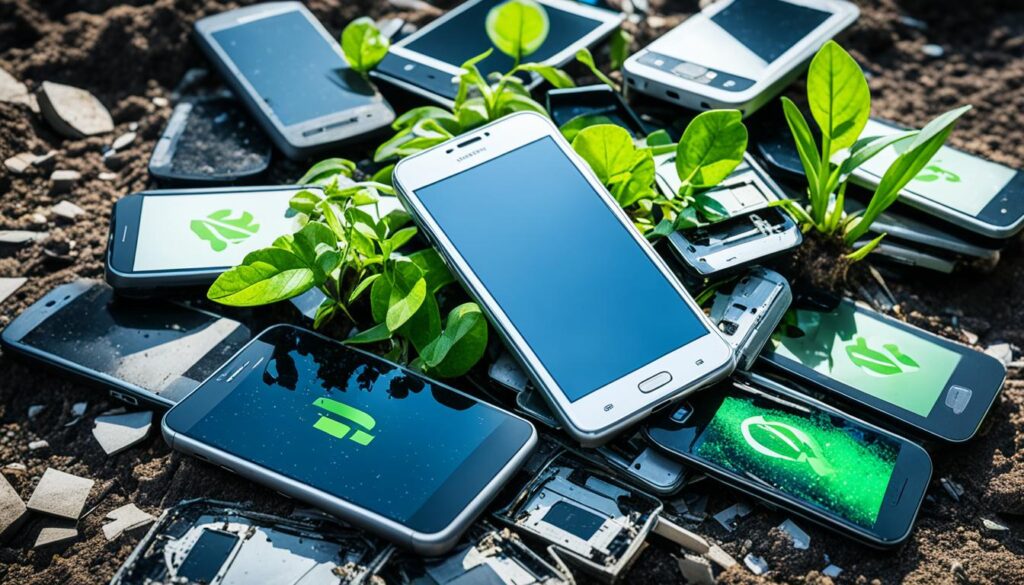
In order to contribute to a more sustainable tech ecosystem, it is essential for consumers to adopt best practices for smartphone recycling. By following eco-friendly disposal methods and implementing consumer tips, individuals can significantly reduce e-waste and maximize the environmental benefits of recycling.
One of the first steps in smartphone recycling is to properly dispose of your device. Instead of throwing it in the trash, explore the various options available for recycling. Local collection points and e-waste centers are convenient drop-off locations where you can deposit your old smartphones for recycling. Mail-in recycling programs and retailer take-back initiatives also provide easy and accessible avenues for recycling.
Before recycling your smartphone, it is important to ensure that your personal data is secure. Perform a data backup and factory reset to protect your information from falling into the wrong hands. Remove SIM and SD cards from your device to prevent any potential data breaches.
Assessing the condition of your smartphone is another crucial step in the recycling process. If the device is still in working condition, consider donating it to charities or non-profit organizations that accept used smartphones. This gives your device a second life and allows someone else to benefit from it.
To further reduce e-waste, consumers can also practice sustainable habits when it comes to upgrading their smartphones. Instead of automatically replacing your device with the latest model every time it is available, consider extending the lifespan of your current smartphone. Regular maintenance, such as replacing batteries or repairing broken screens, can help prolong the life of your device and reduce electronic waste.
By implementing these best practices, consumers can play a significant role in smartphone recycling and contribute to a more eco-friendly disposal process. Together, we can make a positive impact on the environment and create a sustainable future for our tech devices.
Conclusion
In conclusion, eco-friendly smartphone disposal is crucial for minimizing the environmental impact of our tech devices and promoting sustainability. Throughout this guide, we have explored the importance of smartphone recycling and provided essential information on how to properly dispose of our old devices.
Key takeaways for eco-friendly smartphone disposal include responsibly preparing your device for recycling by backing up data, factory resetting, and removing SIM and SD cards. It is equally important to choose a responsible smartphone recycler who follows certified e-waste recycling standards and prioritizes data security.
However, our green tech journey should not end with recycling. By continuing to make sustainable choices in our tech consumption and disposal practices, we can contribute to a greener future. This journey involves reducing e-waste, maximizing the lifespan of our devices, and exploring options for repair and refurbishment.
To encourage wider adoption of smartphone recycling practices, it is important to educate others about the environmental impact of electronic waste and the benefits of recycling. By sharing our knowledge and experiences, we can inspire individuals, communities, and businesses to prioritize eco-friendly tech practices and contribute to a more sustainable world.
FAQ
Why is smartphone recycling important?
Smartphone recycling is important because it helps reduce e-waste, minimize the carbon footprint of smartphone manufacturing and disposal, and contribute to resource conservation.
What is the environmental impact of smartphones?
Smartphones have a significant environmental impact, including the generation of e-waste, carbon emissions from manufacturing and disposal, and the depletion of valuable resources.
What is e-waste and why is it a concern?
E-waste refers to electronic waste, including old smartphones, that are improperly disposed of. It is a concern because it can release toxic substances into the environment and contribute to pollution and habitat destruction.
How does smartphone manufacturing and disposal contribute to carbon emissions?
Smartphone manufacturing and disposal processes consume energy and release greenhouse gases like carbon dioxide, contributing to climate change and global warming.
Why is resource depletion a concern related to smartphones?
Smartphones contain valuable resources such as rare-earth metals and precious metals that are finite and non-renewable. By recycling smartphones, we can conserve these resources and reduce the need for raw material extraction.
What is the lifecycle of a smartphone?
The lifecycle of a smartphone includes the stages of manufacturing, distribution, use, and end-of-life. Understanding the entire lifecycle is crucial for comprehending the environmental impact and identifying opportunities for sustainable practices.
How can I prepare my smartphone for recycling?
To prepare your smartphone for recycling, it is important to back up your data and perform a factory reset to protect your personal information. You should also remove SIM and SD cards and assess the condition of your smartphone for recycling options.
Where can I recycle my smartphone?
You can recycle your smartphone at local collection points and e-waste centers, participate in mail-in recycling programs, or take advantage of retailer take-back initiatives that provide convenient and accessible recycling options.
What happens during the smartphone recycling process?
The smartphone recycling process involves the collection of old devices, their transportation to recycling facilities, and the separation of materials for further processing. This allows for the recovery of valuable components and the proper disposal of hazardous materials.
How can I choose a responsible smartphone recycler?
To choose a responsible smartphone recycler, look for certified e-waste recyclers who follow proper handling and disposal practices. Ask questions about their recycling standards and consider their approach to data security.
What are some best practices for smartphone recycling?
Best practices for smartphone recycling include using eco-friendly disposal methods, reducing e-waste through proper recycling, and maximizing the environmental benefits of recycling by following sustainable practices.
What are the key takeaways for eco-friendly smartphone disposal?
The key takeaways for eco-friendly smartphone disposal are the importance of recycling, the need to continue the green tech journey beyond recycling, and the role individuals can play in encouraging wider adoption of smartphone recycling practices.
Smartphone Antenna Location Explained
Have you ever wondered where the antenna in your smartphone is located? You might be surprised to learn that it’s not always as straightforward as you might think. The internal antenna in smartphones plays a crucial role in ensuring proper signal reception and connectivity. Understanding its placement can help you optimize your device’s performance and signal strength. In this article, we will explore the various aspects of smartphone antenna location and how it has evolved over time.
Understanding the Role of Antennas in Smartphones
Antennas are essential components in smartphones that enable wireless communication. They play a crucial role in ensuring that your device can receive and transmit signals for various functionalities, such as making calls, browsing the internet, and using GPS services.
The Functionality of Antenna Lines
One common feature you may notice on smartphones is the presence of antenna lines. These lines, often seen as plastic stripes on the edges of the device, serve a vital function in optimizing signal reception. While they may seem like mere aesthetic features, they play a significant role in allowing radio waves to pass through the materials of the smartphone and connect to the internet.
Plastic Stripes: More Than Aesthetic Features
The plastic stripes on smartphones act as a passageway for radio waves. They help to minimize signal interference by providing a clear path for wireless signals to travel through the device. Without these antenna lines, signal strength may be compromised, leading to poor call quality and slower internet speeds. Manufacturers strategically position these lines to ensure optimal signal reception throughout the device.
Why Metal and Glass Designs Require Antenna Lines
With the rise of metal and glass designs in smartphones, you may wonder why antenna lines are still necessary. These materials can hinder the ability of radio waves to pass through, resulting in reduced signal strength. To overcome this challenge, manufacturers incorporate antenna lines into the design to maintain optimal signal reception. By carefully integrating the lines, smartphones can balance aesthetics with signal functionality.
Understanding the role of antennas and the importance of antenna lines in smartphones is crucial for maximizing your device’s signal reception and overall connectivity.
| Antenna Technology | Benefits |
|---|---|
| Internal Antennas | Improved signal reception |
| Antenna Lines | Optimized signal transmission |
| Built-in Antennas | Sleek design without compromising connectivity |
Where Is the Antenna on Smartphones
The location of antennas in smartphones varies depending on the device’s design and internal components. Common areas where antennas are found include near the top, bottom, or sides of the device. The precise placement of the antenna is crucial for optimizing signal reception and overall connectivity.
Manufacturers strategically position the antennas to ensure they are not obstructed by other internal components or external factors such as a user’s hand or surrounding objects. By placing the antennas in specific locations, smartphones can achieve better signal strength and mitigate interference.
Let’s explore the specific locations where antennas are commonly placed in smartphones:
- Near the top: Many smartphones have antennas positioned near the top of the device. This placement allows for better signal reception when the device is held in the typical upright position during calls or internet usage.
- Near the bottom: Some smartphones have antennas located near the bottom of the device. This placement is ideal for optimizing signal reception when the device is held in landscape orientation or when there may be obstructions near the top of the device.
- Along the sides: Antennas can also be found along the sides of smartphones. This placement enables better signal reception regardless of how the device is held or oriented.
It’s important for users to be aware of the antenna placement in their smartphones. By understanding where the antenna is located, users can avoid covering it with their hand or obstructing the signal with accessories or cases that interfere with antenna reception.
Optimizing signal reception can lead to improved call quality, faster internet speeds, and a better overall smartphone experience.
Evolution of Smartphone Antenna Design

Smartphone antenna designs have come a long way since the early days of protruding antennas. Manufacturers have continuously advanced antenna technology to improve signal reception and enhance the user experience. Today, we have sleek in-built antennas that seamlessly integrate into the aesthetic design of modern devices.
The transition from protruding to in-built antennas has been driven by the desire for more compact and streamlined smartphone designs. In the past, protruding antennas were necessary to achieve optimal signal reception due to the limited space inside the devices. However, advancements in antenna technology have enabled manufacturers to embed the antennas within the smartphone’s internal components.
This evolution in antenna design has not only improved the aesthetics of smartphones but also enhanced their functionality. With in-built antennas, users no longer have to worry about antennas sticking out or getting damaged. Additionally, the integration of antennas within the device allows for better signal reception without compromising the overall performance of the smartphone.
As smartphones continue to evolve, we can expect further advancements in antenna technology. Manufacturers are constantly exploring innovative ways to enhance signal reception, cater to different frequency bands, and improve connectivity. The evolution of smartphone antenna design showcases the commitment of the industry to provide users with seamless communication experiences.
| Protruding Antennas | In-Built Antennas |
|---|---|
| Required external placement | Embedded within the device |
| Visible and prone to damage | Sleek and protected |
| Limited design options | Seamless integration with device design |
| Potential signal interference | Improved signal reception |
The Intricacies of Smartphone Antenna Placement
Antenna placement in smartphones presents unique challenges, especially with the increasing popularity of full-screen designs. In order to provide users with optimal signal reception while maximizing screen space, smartphone manufacturers must employ innovative solutions for antenna positioning.
The Challenge of Antenna Positioning in Full-Screen Designs
In full-screen smartphones, the available space for antenna placement is significantly reduced compared to traditional designs. This limitation requires antenna engineers to carefully consider alternative locations and methods that won’t interfere with the device’s aesthetics or functionality. The goal is to strike a balance between signal reception and user experience.
Impact of Human Interaction on Signal Reception
Human interaction with smartphones can have a significant impact on signal reception. When users hold their devices in certain ways or obscure the antenna area with their hands, signal quality can be compromised. This phenomenon, commonly known as the “death grip,” can result in decreased signal strength and slower data speeds.
To mitigate the negative effects of human interaction on signal reception, smartphone manufacturers implement various design strategies such as antenna diversity, which allows devices to switch between different antennas to maintain a strong connection. Additionally, users can optimize signal strength by holding their smartphones in a position that minimizes interference with the antenna.
Optimizing signal reception in full-screen smartphones and accounting for human interaction are ongoing challenges for smartphone manufacturers. By continually improving antenna placement techniques and user education, the industry strives to provide users with seamless connectivity and exceptional mobile experiences.
Antenna Diversity and Its Impact on Connectivity

Antenna diversity is a powerful technique utilized in smartphones to significantly improve connectivity and enhance signal strength. This innovative approach involves the incorporation of multiple antennas in a single device, allowing for the seamless switching between different signals and frequencies. By intelligently selecting the strongest available signal, smartphones with antenna diversity can deliver a more stable and reliable connection.
The impact of antenna diversity on connectivity is profound. Through the utilization of multiple antennas, smartphones can enhance their ability to receive and transmit signals, resulting in improved network performance. This is especially beneficial in areas with weak signal coverage or high network congestion. Users can experience fewer dropped calls, faster data speeds, and overall improved signal strength and reliability.
Moreover, antenna diversity plays a crucial role in improving phone signal strength, particularly in scenarios where a single antenna may struggle to capture signals. By combining the signals from multiple antennas, smartphones can achieve a more robust and consistent connection, even in challenging radio frequency environments. This proves particularly advantageous in urban areas with tall buildings or remote regions with limited network infrastructure.
In addition to signal strength and network performance improvements, antenna diversity also helps mitigate the effects of interference. Multiple antennas can intelligently identify and minimize signal interference, resulting in clearer voice calls, reduced data packet loss, and enhanced overall user experience.
Overall, the implementation of antenna diversity in smartphones has a transformative effect on connectivity and signal strength. By harnessing the power of multiple antennas, smartphones can overcome signal limitations and improve the user’s wireless experience.
To visually illustrate the concept of antenna diversity in smartphones, refer to the following diagram:
| Advantages of Antenna Diversity | Disadvantages of Antenna Diversity |
|---|---|
|
|
The table above outlines the advantages and disadvantages of antenna diversity in smartphones. While antenna diversity offers remarkable benefits, including improved signal reception and network performance, it also comes with increased complexity, higher power consumption, and additional cost as tradeoffs.
The Future of Smartphone Antennas: 5G and Beyond
With the rapid advancement of technology, smartphone antennas are continually evolving to meet the demands of emerging connectivity standards, particularly with the advent of 5G. This next generation of wireless technology promises faster data speeds, lower latency, and greater network capacity, making it essential for smartphone antennas to keep up.
MIMO Technology: Enabling Faster Data Speeds
One of the key technologies that will shape the future of smartphone antennas is Multiple-Input Multiple-Output (MIMO). MIMO technology utilizes multiple antennas to transmit and receive signals simultaneously, resulting in improved data speeds and overall network performance. With MIMO, smartphones will be able to handle larger volumes of data and deliver seamless experiences in bandwidth-intensive applications such as video streaming and online gaming.
Antenna Designs Catering to High-Frequency 5G Bands
As 5G operates on higher frequency bands compared to previous generations, smartphone antennas need to adapt to these changes. Antenna designs specifically optimized for the high-frequency 5G bands will be crucial for ensuring optimal signal reception and maximizing the potential of this advanced wireless technology. These new antenna designs will enable smartphones to leverage the full capabilities of 5G networks, offering users faster download and upload speeds, improved network reliability, and enhanced overall performance.
As we move into the era of 5G and beyond, smartphone antennas will play a vital role in delivering the full potential of these cutting-edge networks. Through innovations such as MIMO technology and specialized antenna designs, smartphones will be equipped to provide faster data speeds, seamless connectivity, and improved user experiences.
Source Links
Navigating Smartphones and Social Media Trends
Did you know that over 3.8 billion people around the world use smartphones, and the average user spends about 3 hours and 15 minutes per day on social media platforms? That’s a staggering amount of time dedicated to digital engagement.
In this article, we will delve into the ever-evolving relationship between smartphones and social media. We’ll explore the latest trends in smartphones usage, examine the impact of social media on smartphone users, and discuss strategies for optimizing smartphones for seamless social media interaction.
Key Takeaways:
- Over 3.8 billion people use smartphones worldwide, and the average user spends around 3 hours and 15 minutes on social media daily.
- Understanding smartphones and social media trends is crucial for effective digital engagement.
- Optimizing smartphones for social media interaction can enhance user experiences and increase online presence.
- Stay tuned as we explore the emerging social media platforms, enhancements in established networks, the impact of short-form video content, the role of influencers, and strategies for developing valuable social media communities.
- By leveraging the latest trends in smartphones and social media, businesses can optimize their digital marketing strategies and connect with their target audience more effectively.
Emergence of Novel Social Media Platforms
The social media landscape is constantly evolving, with new platforms emerging and challenging established players. These emerging social media platforms offer users alternative options and unique features that cater to niche audiences.
New Challenger Apps Entering the Market
One notable trend is the introduction of new social media apps that are entering the market. These apps aim to captivate users with innovative functionalities and fresh approaches to social networking. They provide users with exciting features and different user experiences compared to traditional social media platforms. The rapidly evolving nature of the digital world creates opportunities for new players to disrupt the market and gain traction among specific target audiences. This dynamic ecosystem encourages healthy competition and drives continuous innovation in the social media industry.
Shift Towards Augmented Reality in Social Apps
A significant development in social media apps is the integration of augmented reality (AR) features. Augmented reality technology enhances the user experience by overlaying digital elements onto the real world. AR in social apps allows users to engage with interactive and immersive content, blurring the line between the virtual and physical realms. From AR filters in selfie apps to AR lenses in video applications, these features provide users with creative tools to express themselves and engage with their followers. The integration of augmented reality creates new opportunities for storytelling, visual experiences, and brand collaborations within the social media landscape. With AR technology rapidly advancing, social apps are becoming more visually compelling and interactive, revolutionizing how users engage with content.
| New Social Media Apps | Unique Features | Target Audience |
|---|---|---|
| TikTok | Short-form vertical videos | Youthful and creative individuals |
| Clubhouse | Audio-only chat rooms | Audio enthusiasts and thought leaders |
| Venmo | Social payment and money transfer | Millennials and Gen Z |
| Visual discovery and inspiration | Creative individuals and hobbyists |
Image related to the section:
Enhancements in Established Social Networks

Established social media platforms like Facebook, Instagram, Twitter, and LinkedIn are constantly evolving to provide users with enhanced and engaging experiences. These platforms go beyond their initial functionalities and continuously introduce updates and enhancements to keep up with the ever-changing digital landscape.
One notable area of improvement in these social networks is the expansion into e-commerce. Platforms like Facebook and Instagram have integrated shopping features, allowing users to discover and purchase products directly on the platforms. This seamless integration between social media and e-commerce provides a convenient and streamlined shopping experience for users, promoting increased engagement and revenue opportunities for businesses.
Furthermore, established social networks are focusing on creating interactive experiences for users. Features such as live videos, stories, and interactive polls encourage users to actively engage with content and connect with their peers. By promoting user interactions and conversations, these platforms foster a sense of community and increase user satisfaction.
Monetization options have also become a significant focus for established social media platforms. With the rise of influencer marketing and the demand for sponsored content, platforms like Instagram and YouTube have introduced monetization programs that allow content creators to generate income from their posts. These programs enable influencers to utilize their platforms effectively, create high-quality content, and monetize their influence.
Overall, the continuous enhancements in established social networks aim to provide users with a more immersive and personalized social media experience. By expanding into e-commerce, offering interactive features, and implementing monetization options, these platforms are evolving to meet the changing needs and expectations of their users.
Smartphones and Social Media: A Symbiotic Growth
Smartphones and social media are two intertwined aspects of our digital world. As smartphones continue to evolve, they bring forth new features that enhance our social media experiences. From improved cameras to faster processors and larger screens, smartphones have revolutionized the way we interact with social media platforms. This section will explore the evolving features of smartphones and how they impact social media usage.
Evolving Features in Smartphone Technology
Smartphones have come a long way since their inception. Today’s smartphones offer advanced features that cater to our ever-growing digital needs. The continuous evolution of smartphone technology has paved the way for better cameras, allowing us to capture high-quality photos and videos for our social media posts. In addition, faster processors enable smoother performance, ensuring seamless browsing and multitasking on social media platforms. The larger screens provide a more immersive experience, making it easier to engage with content on social media.
Furthermore, smartphones now come equipped with artificial intelligence (AI) capabilities that enhance our social media experiences. AI-powered features like facial recognition, photo editing, and predictive text help us create compelling content and engage with our networks more efficiently.
Strategic Integration of Advanced Social Media Apps
In addition to improving the hardware, smartphone manufacturers are also focusing on strategic integration of advanced social media apps. This ensures that users have seamless access to their favorite social media platforms and can easily navigate through the apps. Smartphone manufacturers collaborate with social media giants to optimize the user experience and provide dedicated features tailored to specific platforms.
The integration of social media apps goes beyond the traditional presence on smartphones. Many smartphone manufacturers now offer pre-installed social media apps that are deeply integrated into their operating systems. This integration enables users to interact with social media directly from their phone’s home screen, receive notifications, and access advanced features without having to open the individual apps.
The strategic integration of advanced social media apps also allows for a more personalized social media experience. Smartphone manufacturers use artificial intelligence algorithms to understand users’ preferences and tailor content suggestions accordingly. This ensures that users are presented with relevant and engaging content that aligns with their interests.
As smartphones and social media continue to evolve, their symbiotic growth remains evident. The advancements in smartphone technology and the strategic integration of advanced social media apps contribute to a seamless and immersive social media experience. Users can now effortlessly capture and share moments, connect with their social networks, and stay updated with the latest trends, all from the palm of their hands.
Impact of Short-Form Video Content

Short-form video content has revolutionized the social media landscape, with platforms like TikTok and Instagram Reels leading the way. These bite-sized videos have quickly gained immense popularity, captivating users and creating a new form of online entertainment.
The viral nature of short-form videos is undeniable. Their quick and engaging format makes it easy for users to consume and share content, resulting in widespread reach and exposure. With just a few seconds, a well-crafted video can capture the attention of millions, leading to increased brand visibility and recognition.
Platforms like TikTok and Instagram have recognized the potential of short-form video content and have implemented monetization strategies to empower content creators. Through features like brand partnerships, sponsored content, and in-app purchases, these platforms offer opportunities for creators to generate income from their content.
By tapping into the impact of short-form video content and understanding the viral nature of bite-sized media, content creators and brands can effectively leverage these platforms to reach a wider audience and drive engagement. With the right monetization strategies in place, social media platforms have become a lucrative space for content creation and brand promotion.
The Role of Influencers in Shaping Online Trends
Influencers play a significant role in shaping online trends and influencing consumer behavior. With the rise of social media platforms, influencers have gained immense popularity and have become powerful voices in the digital space.
These individuals have the ability to connect with their audience authentically, often sharing personal experiences, product recommendations, and lifestyle tips. Their genuine approach resonates with users, leading to increased engagement and trust.
Moreover, influencers employ various strategies to build their following and maintain a strong online presence. They consistently create high-quality content, collaborate with brands, engage with their audience through comments and direct messages, and stay on top of current trends.
One interesting phenomenon within the influencer landscape is the rise of micro-influencers. These individuals have smaller but highly engaged followers, often within specific niche markets. Their niche content appeals to targeted audiences, allowing brands to reach a more specialized group of consumers.
The impact of influencers goes beyond just promoting products and services. They have the power to shape public opinion, introduce new ideas and concepts, and even initiate social change. Brands recognize the influence influencers wield and often partner with them to amplify their marketing efforts and tap into their dedicated fan base.
In conclusion, influencers have become key players in shaping online trends. Their authentic connections with followers, strategic content creation, and ability to tap into niche markets make them invaluable to brands and marketers. As social media continues to evolve, influencers will undoubtedly continue to play a pivotal role in shaping the digital landscape.
Developing Valuable Social Media Communities

Building valuable social media communities is crucial for brands and individuals alike. It provides a platform for interaction, engagement, and fostering brand loyalty. In this section, we will explore effective strategies for developing thriving communities on social media platforms.
Encouraging User Participation Through Interactive Features
One key aspect of nurturing social media communities is encouraging user participation through interactive features. These features invite users to actively engage with the content, fostering a sense of belonging and connection. One popular method is the use of polls and quizzes that enable users to share their opinions or test their knowledge. This not only encourages participation but also generates valuable insights and feedback for brands.
Another interactive feature is the inclusion of user-generated content. By encouraging users to contribute their own content, such as photos, testimonials, or reviews, brands can create a sense of community ownership and pride. User-generated content not only boosts engagement but also serves as social proof, influencing others to join the community and engage with the brand.
Fostering Brand Loyalty via Community Engagement
Community engagement plays a vital role in fostering brand loyalty. When brands actively engage with their community, they show that they value their customers and are genuinely interested in their opinions and feedback. This can be achieved through responding to comments, addressing customer queries, and even featuring user-generated content.
By building a strong relationship with their community, brands can create a loyal customer base that not only supports and advocates for the brand but also becomes an essential part of its growth. Engaging with the community also provides brands with the opportunity to gather valuable insights, understand customer needs and preferences, and tailor their offerings accordingly, further strengthening brand loyalty.
To effectively foster brand loyalty through community engagement, brands should prioritize regular interaction, provide personalized responses, and create an inclusive and supportive environment where community members feel valued and appreciated.
| Benefits of Developing Social Media Communities |
|---|
| Increased brand visibility and awareness |
| Enhanced customer engagement and satisfaction |
| Opportunity for valuable user-generated content |
| Insights and feedback for product/service improvements |
| Stronger brand loyalty and customer advocacy |
Table: Benefits of Developing Social Media Communities
Conclusion
In conclusion, adapting to the continuous transformation in social networking is crucial for businesses and marketers. The ever-changing landscape of smartphones and social media demands constant vigilance to stay ahead of the curve. By staying abreast of the latest trends and developments in these areas, businesses can optimize their digital marketing strategies and enhance their online presence.
It is essential to recognize the impact of smartphones and social media on consumer behavior and adapt accordingly. Leveraging these trends effectively allows businesses to engage with their target audience more successfully and drive desired outcomes. Whether it’s incorporating new features, exploring emerging platforms, or embracing short-form video content, staying proactive is key to staying relevant.
Adapting to Social Networking Transformation
Adapting to social networking transformation entails being agile and responsive to evolving user preferences and behaviors. It involves understanding the shifts in consumer expectations, technological advancements, and the influence of social media trends. By keeping pace with these changes, businesses can position themselves as industry leaders and create meaningful connections with their audience.
Leveraging Trends for Effective Digital Marketing Strategies
To achieve effective digital marketing strategies, businesses must consistently leverage the latest trends and insights in smartphones and social media. This requires a comprehensive understanding of the target audience, their preferences, and the platforms they engage with. By aligning marketing efforts with these trends, businesses can create compelling content and campaigns that resonate with their audience and drive measurable results.
Source Links
How Smartphones Use Magnets: Unveiling Tech Secrets
Have you ever wondered how your smartphone utilizes magnets for various functions? From speakers and microphones to vibration motors and magnetic sensors, magnets play a crucial role in the functionality and features of smartphones. In this article, we will delve into the world of smartphone magnet technology, exploring the different magnetic components in smartphones and their applications. Get ready to unveil the tech secrets behind how smartphones use magnets to enhance user experience and functionality.
Key Takeaways:
- Smartphones utilize magnets for various functions and feature enhancements.
- Magnetic components in smartphones include speakers, microphones, vibration motors, and sensors.
- Magnets play a crucial role in smartphone accessories like car mounts and wireless charging pads.
- Smartphones utilize magnetometers for navigation and compass applications.
- Magnets also revolutionize smartphone security with authentication systems and enhanced payment security.
The Invisible Influence: How Magnets Power Your Smartphone Experience
Magnets have a hidden influence on our smartphone experience, powering various features and functions. They play a crucial role in enhancing user experience and functionality. Let’s explore how magnets are integrated into smartphones and their impact on our daily lives.
Smartphones are equipped with magnetic components that contribute to their overall functionality. These components include magnet sensors, which detect changes in the surrounding magnetic field. The data collected by these sensors enables the smartphone to perform various tasks and provide users with a seamless experience. From auto-rotate screen orientation to detecting the presence of a flip cover, magnet sensors enhance the usability and convenience of our smartphones.
Magnetic features in smartphones are also responsible for powering essential functions. One such example is the vibration motor, which provides haptic feedback during notifications or alerts. This motor relies on the interaction between magnets to create vibrations, adding a tactile element to our smartphone experience.
Furthermore, magnets are crucial in the functioning of speakers and microphones in smartphones. They help in producing sound by interacting with the voice coil, which generates audio signals. Magnets are also involved in the tuning and amplification of these sound waves, resulting in the high-quality audio we enjoy while using our smartphones.
Innovation with magnets has further revolutionized smartphone technology. One notable example is the use of magnetic attachments, such as magnetic chargers and mounting systems. These attachments provide users with convenient and efficient ways to charge their devices and secure them in various settings, respectively. Magnetic attachments not only simplify our everyday activities but also enhance the versatility of smartphones.
In conclusion, magnets are an invisible yet powerful force that powers our smartphone experience. They contribute to the functionality, convenience, and innovation we find in modern smartphones. From magnet sensors to magnetic attachments, the seamless integration of magnets in smartphones enhances user experience and brings us closer to the future of mobile technology.
Magnetic Components in Smartphones: An Overview
Smartphones are equipped with various magnetic components that contribute to their functionality and features. In this section, we will provide an overview of these magnetic components and their role in smartphones.
Speakers and Microphones: The Role of Magnets
Magnets play a crucial role in the functioning of speakers and microphones in smartphones. By utilizing the power of magnets, smartphones are able to produce high-quality sound and capture clear audio. In speakers, magnets are used to drive the diaphragm, creating vibrations that generate sound waves. On the other hand, microphones use magnets to convert sound waves into electrical signals, allowing users to communicate effectively during phone calls and voice recordings.
Vibration Motors: Powered by Magnetism
Smartphones also feature vibration motors that provide haptic feedback, alerting users to incoming notifications, calls, and other interactions. These motors rely on the power of magnets to create rapid vibrations, producing the desired tactile response. By carefully controlling the magnetic field, smartphones can offer different vibration patterns and intensities, enhancing user experiences and interactions with the device.
Magnetic Sensors: Enriching Functionality
Magnetic sensors are another important component found in smartphones. These sensors detect and measure magnetic fields, enabling various functionalities and features. For example, smartphones use magnetic sensors to determine the device’s orientation and provide accurate compass readings. Additionally, they are used in magnetometers to detect magnetic fields from external sources, enhancing navigation and location-based services. Magnetic sensors in smartphones open up a wide range of possibilities, from augmented reality experiences to precise navigation and beyond.
How Do Smartphones Use Magnets?
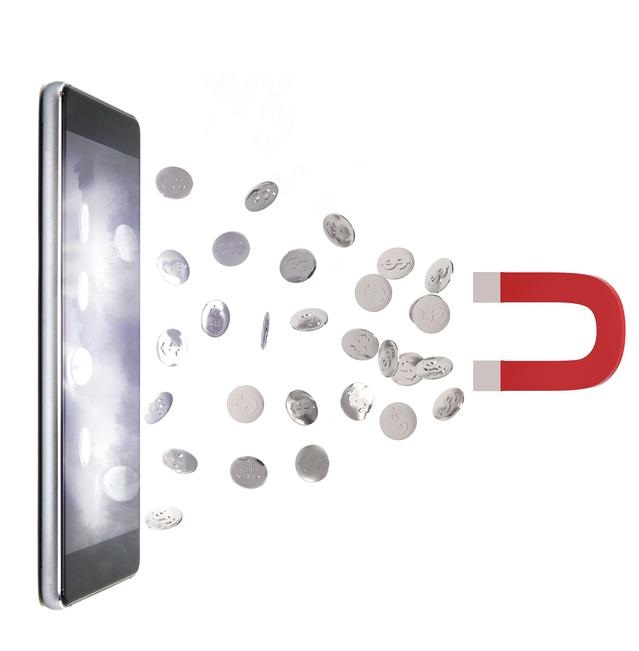
In the world of smartphones, magnets play a vital role in enhancing functionality and providing innovative features. From magnetic attachments to secure phone holders, smartphones have various applications for magnets. Let’s explore the fascinating ways in which smartphones utilize magnets for a better user experience.
One of the key uses of magnets in smartphones is for magnetic data transfer. By using magnetic connectors or adapters, smartphones can transfer data quickly and securely. This technology eliminates the need for traditional physical connectors, making data transfer more convenient for users.
Another application of magnets in smartphones is the integration of magnetic sensors. These sensors detect magnetic fields and enable features such as compass functionality and magnetic field detection. They enhance the smartphone’s capability to provide accurate direction and detect the presence of magnetic objects or fields.
Smartphones also utilize magnets for innovative features, such as magnetic phone cases and magnetic stands. These accessories use magnets to securely hold the smartphone in place, providing convenience and stability. Additionally, magnets are utilized in wireless charging pads for easy and efficient charging.
Through these various applications, magnets contribute to the overall functionality and versatility of smartphones. They enhance the user experience and provide convenient solutions for data transfer, secure phone holding, and charging.
So, the next time you use your smartphone and wonder how it achieves its remarkable capabilities, remember the role that magnets play behind the scenes. They are the unsung heroes powering your smartphone’s functionality and enhancing your digital experience.
Navigation and Compass Apps: Guided by Earth’s Magnetism
Have you ever wondered how navigation and compass apps on your smartphone accurately determine your direction? In this section, we will explore the role of magnets in navigation and compass apps. We will discuss how smartphones utilize magnetometers, also known as magnetometers, to detect the Earth’s magnetic field and provide accurate compass readings. Discover how magnets guide your smartphone’s navigation and compass apps.
Navigation and compass apps have become an integral part of our daily lives, helping us find our way in unknown places and ensuring we’re always on the right track. But have you ever wondered how these apps precisely determine our direction and point us in the right way? The secret lies in the integration of magnetic field sensors, known as magnetometers, in our smartphones.
Smartphones are equipped with a magnetic field sensor, also known as a magnetometer, which detects the Earth’s magnetic field. This sensor allows navigation and compass apps to accurately determine the user’s orientation and provide reliable compass readings. By utilizing the magnetic field sensor in smartphones, these apps can effectively guide users to their desired destinations.
The magnetometer in smartphones measures the strength and direction of the Earth’s magnetic field. This information is then processed by the smartphone’s software to calculate the device’s orientation and display it on the screen. Whether you’re walking, driving, or hiking, navigation and compass apps rely on this technology to ensure accurate and reliable direction guidance.
Smartphone compass technology has come a long way, and advancements in magnetometer technology have made navigation apps more precise and reliable than ever before. With the integration of magnetometers in smartphones, users can confidently navigate unfamiliar areas and explore the world with ease.
The Science Behind Magnetic Phone Accessories
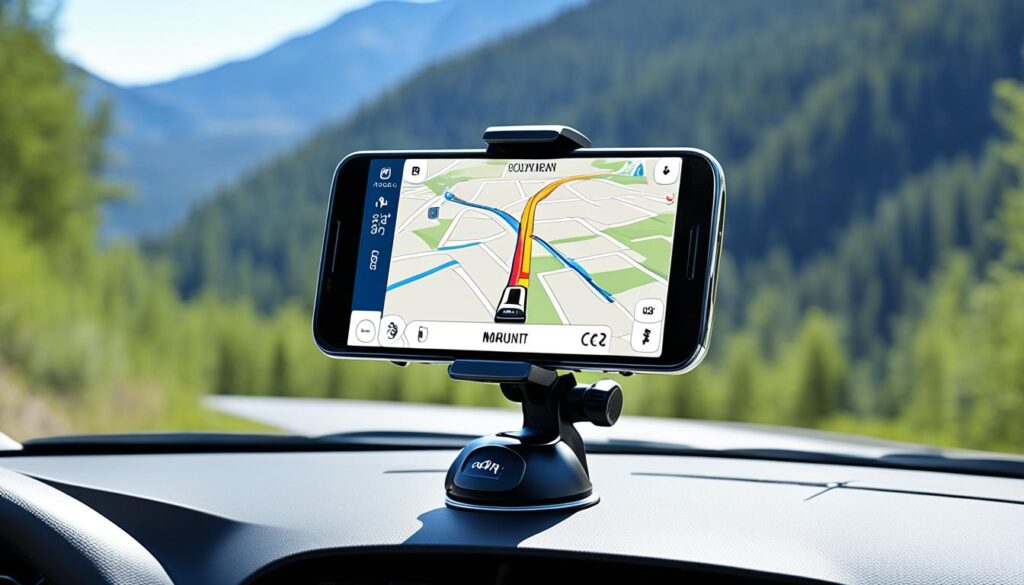
Magnetic phone accessories have gained popularity in recent years. These innovative accessories utilize the power of magnets to enhance convenience and functionality in smartphone usage. In this section, we will explore the science behind magnetic phone accessories and their integration with smartphones, providing a deeper understanding of their benefits and features.
Magnetic Car Mounts: Convenience Meets Technology
Magnetic car mounts are one of the most popular magnetic phone accessories. By utilizing a strong magnetic base, these mounts securely hold your smartphone in place while driving. The convenience of a magnetic car mount allows you to easily access your phone for navigation, music control, or hands-free calling. The powerful magnets ensure a secure and stable hold, keeping your smartphone within reach and providing a safer driving experience.
Wireless Charging Pads: The Magnetic Connection
Wireless charging pads have revolutionized the way we charge our smartphones. These pads use magnetic induction to transfer power from the pad to the smartphone without the need for cables. The magnetic connection between the pad and the smartphone allows for effortless charging by simply placing the device on the pad. The magnets ensure proper alignment and optimal charging efficiency, making wireless charging a convenient and hassle-free experience.
| Magnetic Phone Accessory | Function |
|---|---|
| Magnetic Car Mount | Securely holds smartphones in cars for easy access and safer driving |
| Wireless Charging Pad | Enables convenient, cable-free charging through magnetic induction |
As demonstrated by the table above, magnetic phone accessories offer various functions to enhance smartphone usage. Whether it’s the convenience of a magnetic car mount or the wireless charging capabilities of a magnetic charging pad, these accessories utilize the power of magnets to provide seamless integration with smartphones.
By understanding the science behind magnetic phone accessories, users can make informed decisions when choosing the right accessories for their smartphones. Whether it’s for convenience, functionality, or both, magnetic phone accessories offer an innovative and user-friendly way to enhance smartphone usage.
Magnetometers: The Sensor You Didn’t Know Your Phone Had
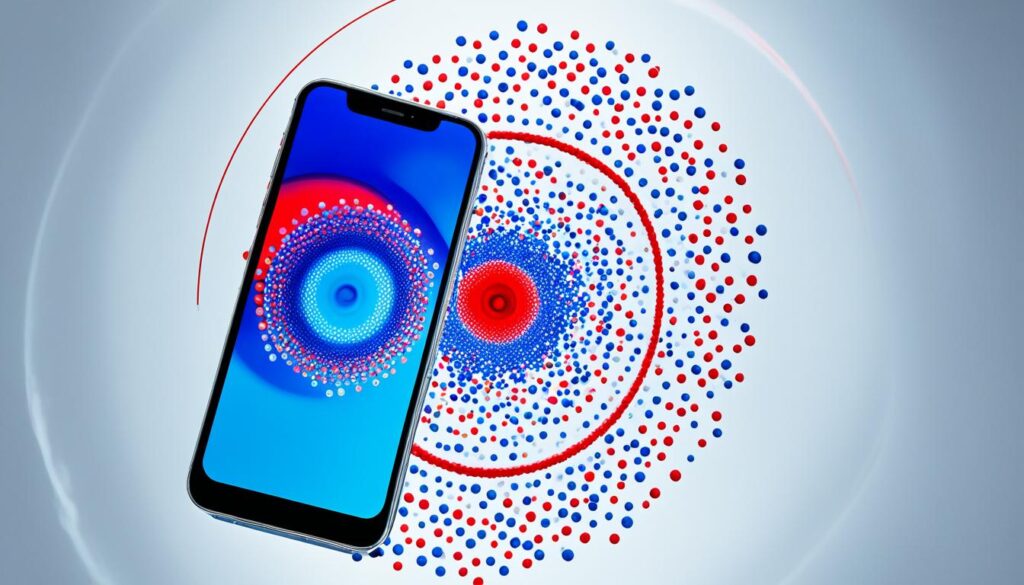
Did you know that your smartphone is equipped with a built-in magnetometer? This often-overlooked sensor is responsible for detecting and measuring magnetic fields. In this section, we will explore the role of magnetometers in smartphones and uncover the fascinating world of magnetic technology in cell phones.
A magnetometer is a small electronic component that is able to detect and measure magnetic fields. It works by utilizing the principles of magnetism and the interaction of magnetic fields with the sensor. This sensor is essential for various magnetic features and functionalities in your smartphone.
With the help of the magnetometer, your smartphone is able to provide accurate compass readings, detect magnetic attachments, and enable innovative magnetic functionalities. The magnetometer allows your phone to sense changes in magnetic fields and convert them into useful data that can be utilized by different applications and features.
For example, the magnetometer plays a crucial role in compass apps, guiding you in the right direction based on the Earth’s magnetic field. Additionally, it enables your phone to detect when a magnetic attachment, such as a phone case or a magnetic accessory, is connected, triggering specific actions or settings.
The use of magnetometers in smartphones showcases the constant innovation and integration of magnetic technology in cell phones. These sensors contribute to enhancing user experience and expanding the functionality of our beloved devices.
Next time you reach for your smartphone, remember the hidden sensor that enables various magnetic features and functionalities – the magnetometer. It’s just another example of how magnets are revolutionizing the world of smartphones.
Understanding Magnetic Interference with Smartphones
Magnets can have an impact on smartphones beyond their intended purposes. In this section, we will explore the effects of magnetic interference on signal reception and data transfer in smartphones. We will discuss how magnets can potentially weaken signals and affect the performance of your device. Additionally, we will address the myth of magnets erasing smartphone data and uncover the truth behind this belief. Gain a deeper understanding of how magnets can interfere with your smartphone’s functionality.
Effects on Signal Reception and Data Transfer
Magnetic interference can disrupt the signals that smartphones rely on for communication. The presence of strong magnetic fields near your device can cause disturbances in wireless signals, leading to dropped calls, slow internet connections, and poor reception.
Additionally, magnets placed near antennas or other critical components can distort electromagnetic waves, resulting in reduced signal strength. This interference can limit the range and reliability of your smartphone’s connectivity.
When it comes to data transfer, magnets can interfere with the performance of near-field communication (NFC) technology and wireless charging. Magnetic fields can disrupt the precise transfer of data and energy between devices, leading to slower transfer speeds or failed connections.
Can Magnets Really Erase Your Data?
There is a common misconception that magnets can erase smartphone data. However, this is largely a myth. The storage technology used in modern smartphones, such as flash memory, is not susceptible to magnetism like older magnetic storage devices.
While the magnetic field produced by a typical refrigerator magnet or magnetic smartphone case will not erase your data, it is still advisable to avoid placing magnets directly on your device. Strong magnets, such as those used in industrial settings or magnetic resonance imaging (MRI) machines, can potentially cause damage to your device’s internal components if they come into direct contact.
It’s important to note that most smartphones today are equipped with built-in magnetic sensors to detect and measure magnetic fields. These sensors can help your device provide interactive features like compass functionality and auto-rotate screens, but they are not powerful enough to erase your data.
By understanding the potential impact of magnets on your smartphone, you can take precautions to avoid interference and ensure optimal device performance.
The Curious Case of Magnetic Messaging
In this section, we will explore the curious case of magnetic messaging in smartphones. We will discuss how smartphones can utilize the magnetic field sensor, or magnetometer, to receive messages in the form of a varying magnetic field. Discover the potential of magnetic messaging and its applications in the world of smartphones.
Revolutionizing Smartphone Security with Magnets
Magnets are revolutionizing smartphone security in various ways. In this section, we will explore magnet-based authentication systems that enhance the security of smartphones. We will discuss how magnetic sensors play a role in these systems and provide an extra layer of protection. Additionally, we will explore how close-proximity magnetic signals can enhance payment security on smartphones. Discover the innovative ways magnets are securing your smartphone and personal information.
Magnet-Based Authentication Systems
Smartphone manufacturers are implementing magnet-based authentication systems to ensure secure access to devices. These systems utilize the smartphone’s magnetic sensor to detect and authenticate magnetic patterns generated by wearable devices or other digital accessories. By requiring the presence of a specific magnetic field, these systems enhance the security of user authentication, making it more difficult for unauthorized individuals to gain access to smartphones.
Enhanced Payment Security with Close-Proximity Magnetic Signals
The use of magnets in payment security has become increasingly popular. Close-proximity magnetic signals, also known as Magnetic Secure Transmission (MST), allow smartphones to securely transmit payment information to compatible payment terminals. By generating a unique magnetic field, smartphones can securely communicate with payment terminals, preventing unauthorized data interception. This technology provides an additional layer of security, ensuring safe and reliable mobile payments.
Smartphone Magnet Myths Debunked: The Real Effects of Neodymium Magnets
There are many myths and misconceptions surrounding the use of magnets in smartphones. In this section, we will debunk these myths and uncover the real effects of neodymium magnets in smartphones. Let’s separate fact from fiction and gain a clearer understanding of the role of neodymium magnets in your smartphone.
One common myth is that magnets can damage cell phones. While it is true that strong magnets can disrupt certain electronic devices, the neodymium magnets used in smartphones are specifically designed to have minimal interference. These magnets are strategically placed and shielded to prevent any negative impact on the device’s performance. So rest assured, your smartphone is built to withstand the presence of magnets.
Another misconception is that magnets can erase smartphone data. However, this is not the case. The neodymium magnets in smartphones are not powerful enough to erase or corrupt data. The data stored in your smartphone is safely stored on non-magnetic components, such as flash storage. So you can use magnets and magnetic accessories without worrying about losing your precious data.
So, what is the real effect of neodymium magnets in smartphones? These magnets play a crucial role in various magnetic features found in smartphones, including magnetic sensor technology, attachment systems, and accessories. They enhance the functionality and user experience of your device, allowing for easy attachment of magnetic accessories, such as car mounts and wireless chargers. These magnets are carefully calibrated to provide a seamless and secure connection.
Source Links
Smartphones & Internet: How Do They Connect?
Smartphones have become an indispensable part of our lives, allowing us to stay connected, access information, and navigate the digital world with ease. But have you ever wondered how smartphones connect to the internet? What enables these devices to access the vast realm of online content and services? Let’s unravel the mystery of smartphone internet connectivity and explore the inner workings of this seamless connection.
In this article, we will delve into the basics of smartphone internet connectivity, discussing the requirements for internet access on smartphones and the role of mobile data networks. We will also explore the realm of Wi-Fi connectivity and how smartphones can connect to public hotspots for internet access. Join us on this journey as we uncover the fascinating world of smartphone internet connectivity.
Key Takeaways:
- Smartphones rely on various technologies, such as cellular data networks and Wi-Fi, to establish an internet connection.
- Prerequisites for internet access on smartphones include a mobile phone that supports internet connectivity and a mobile phone service that offers data transmission.
- Mobile data networks, from 3G to 5G, play a crucial role in enabling internet access on smartphones.
- Wi-Fi connectivity allows smartphones to connect to wireless networks, including public hotspots, for internet access.
- Optimizing smartphone internet use and understanding network coverage and speed considerations are essential for a seamless online experience.
Understanding the Basics of Smartphone Internet Connectivity
In this section, we will delve deeper into the basics of smartphone internet connectivity. We will discuss the prerequisites for internet access on smartphones, the role of mobile data networks, and Wi-Fi connectivity and public hotspots.
Prerequisites for Internet Access on Smartphones
Before being able to connect to the internet on your smartphone, there are a few prerequisites that must be met. Firstly, your smartphone must support internet access. Most modern smartphones come with built-in internet capabilities. However, it is important to ensure that your device has the necessary hardware and software to connect to the internet.
Secondly, you need a mobile phone service that supports data transmission. This means having a cellular plan that includes mobile data. Without a data plan, your smartphone will not be able to access the internet unless connected to a Wi-Fi network.
The Role of Mobile Data: From 3G to 5G
Mobile data networks play a crucial role in enabling internet connectivity on smartphones. They allow your smartphone to connect to the internet while on the go, without the need for Wi-Fi. Mobile data networks have evolved over the years, with each generation offering faster speeds and better coverage.
Starting with 3G, which introduced basic internet access on smartphones, we now have 4G and the latest 5G technology. These advancements have revolutionized smartphone internet connectivity, enabling faster browsing, smoother video streaming, and more reliable connections.
With 5G, the next generation of mobile data networks, we can expect even faster download and upload speeds, reduced latency, and increased network capacity. This will further enhance the overall smartphone internet experience.
Wi-Fi Connectivity and Public Hotspots
In addition to mobile data networks, Wi-Fi connectivity is another key aspect of smartphone internet access. Wi-Fi allows smartphones to connect to local wireless networks, such as those at home, offices, cafes, or public hotspots.
Public hotspots are particularly useful when you are in areas with limited cellular network coverage or when you want to save on mobile data usage. These hotspots are available in various public places, including airports, hotels, restaurants, and libraries.
When connected to a Wi-Fi network, your smartphone can access the internet without using mobile data, providing a fast and reliable connection for browsing, downloading apps, streaming media, and more.
How Do Smartphones Connect to the Internet

In this section, we will specifically focus on how smartphones connect to the internet. Smartphones utilize different methods and technologies to establish an internet connection, ensuring seamless connectivity for users.
Cellular Data Networks:
Smartphones rely on cellular data networks to access the internet when Wi-Fi is unavailable. These networks provide connectivity through mobile service providers, enabling users to access the internet anywhere within network coverage. As technology has advanced, mobile data networks have evolved from 3G to the latest 5G technology, offering faster speeds and more reliable connections.
Wi-Fi Connectivity:
Smartphones are also capable of connecting to Wi-Fi networks for internet access. Wi-Fi technology allows users to connect to wireless networks, typically in homes, offices, or public areas with Wi-Fi hotspots. By connecting to Wi-Fi, smartphones can access the internet without relying on cellular data, providing cost savings and potentially faster speeds.
Whether smartphones connect through cellular data or Wi-Fi, the process of establishing an internet connection involves authentication and communication between the device and the network. Factors such as network availability, signal strength, and device settings can influence the quality of the connection.
Setting Up Your Smartphone for First-Time Internet Access
In order to access the internet on your smartphone, you need to set it up for internet access. This section will guide you through the necessary steps to get your smartphone connected to the internet for the first time.
Activating the Pre-Loaded Web Browser
Most smartphones come with a pre-loaded web browser that allows you to browse the internet. To activate the web browser, follow these steps:
- Open the settings menu on your smartphone.
- Scroll down and find the “Applications” or “Apps” section.
- Tap on the web browser application to open it.
- Follow the on-screen instructions to complete the activation process.
Once the web browser is activated, you can start using it to access websites and browse the internet.
Managing Bookmarks for Easy Access
Managing bookmarks on your smartphone can make it easier to access your favorite websites. Follow these steps to manage bookmarks:
- Open the web browser on your smartphone.
- Navigate to the website you want to bookmark.
- Tap on the bookmark icon, usually located in the top-right corner of the screen.
- Select “Add Bookmark” or “Bookmark this Page”.
- Choose a name for the bookmark and select a folder to save it in, if desired.
- Tap “Save” to add the bookmark to your collection.
To access your saved bookmarks, open the web browser and tap on the bookmarks icon. From there, you can select the bookmark you want to visit.
Downloading Content: Apps, Music, Videos, and More
Downloading content on your smartphone allows you to have apps, music, videos, and more available for offline access. Here’s how to download content:
- Open the app store on your smartphone.
- Search for the desired app, song, video, or other content.
- Tap on the content you want to download.
- Follow the on-screen instructions to complete the download process.
Once the download is complete, you can access the content from your smartphone, even without an internet connection.
Staying Secured: Ensuring Safe Browsing and Transactions
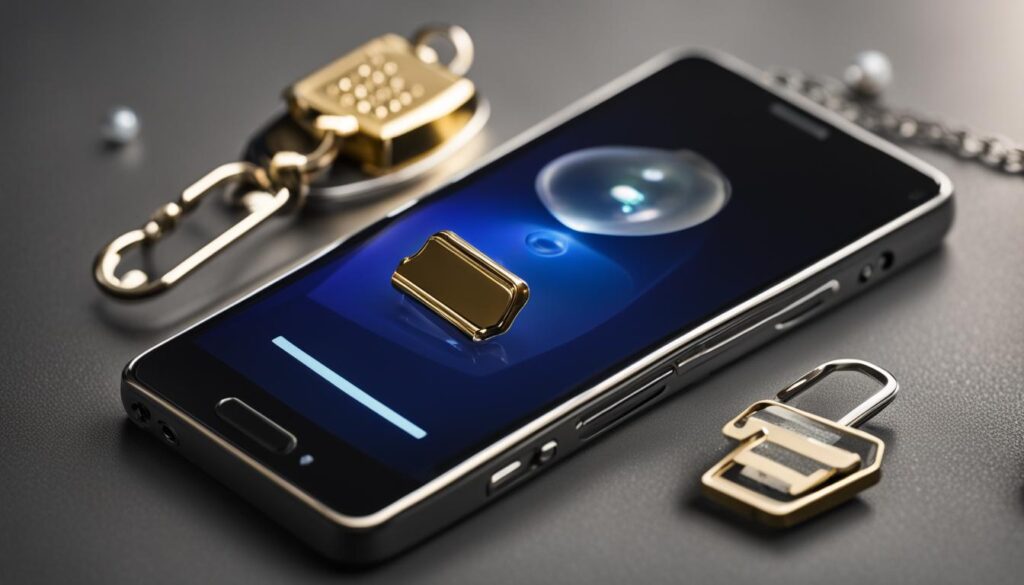
In today’s digital age, smartphone internet security is of paramount importance. Protecting your personal information while browsing the internet and conducting transactions on your smartphone is crucial to safeguarding your privacy and preventing unauthorized access. In this section, we will explore various measures you can take to ensure safe browsing and secure transactions on your smartphone.
Security Certificates and Safe Mobile Browsing
One of the key aspects of smartphone internet security is the use of security certificates. Security certificates establish a secure connection between your smartphone and the websites you visit, encrypting the data transmitted between them. This encryption helps prevent hackers and malicious actors from intercepting your information.
When browsing the web on your smartphone, always look for the padlock icon in the address bar, indicating that the website is using a security certificate. Additionally, make sure the website’s URL begins with “https://” instead of “http://”. The “s” in “https” stands for secure and signifies that the website has implemented security measures to protect your data.
Transferring and Downloading Security Credentials
Transferring and downloading security credentials securely is essential for maintaining smartphone internet security. Whether it’s passwords, authentication tokens, or other sensitive information, it’s crucial to use encrypted channels for transferring and downloading these credentials.
When transferring security credentials between devices or downloading them from cloud storage, ensure that you’re using secure and encrypted connections. Avoid using public Wi-Fi networks, as they may not provide adequate security. Instead, opt for private and trusted networks, such as your home Wi-Fi network or a secure mobile data connection.
Facial Recognition and Fingerprint Verification for Secure Access
Smartphones offer advanced security features such as facial recognition and fingerprint verification to ensure secure access to your device and online services. These biometric authentication methods add an extra layer of protection, making it difficult for unauthorized individuals to access your smartphone and personal data.
Enable facial recognition or fingerprint verification on your smartphone for secure and convenient access. These features use unique characteristics specific to you, such as your face or fingerprint, to authenticate your identity. By using biometric authentication, you can ensure that only authorized individuals can unlock your smartphone and access sensitive information.
By following these measures, you can enhance smartphone internet security and enjoy safe browsing and secure transactions on your device.
Wi-Fi and Smartphones: Harnessing Wireless Connectivity
In this section, we will delve into the topic of Wi-Fi connectivity and smartphones. We will discuss how smartphones can harness wireless connectivity through Wi-Fi technology. We will explain the process of connecting smartphones to Wi-Fi networks, including home networks and public hotspots. We will also cover the benefits and considerations of using Wi-Fi for internet access on smartphones.
Wi-Fi has revolutionized the way we connect to the internet. With Wi-Fi-enabled smartphones, users have the flexibility to access the internet without relying solely on mobile data networks. By connecting to Wi-Fi networks, smartphone users can enjoy faster speeds, more stable connections, and potentially save on their data usage.
To connect your smartphone to a Wi-Fi network, follow these simple steps:
- Unlock and navigate to the settings menu on your smartphone.
- Look for the Wi-Fi option in the settings menu and tap on it.
- Your smartphone will scan for available Wi-Fi networks in the vicinity.
- Select the desired Wi-Fi network from the list of available networks.
- If the network is secured with a password, enter the password to connect.
- Your smartphone will establish a connection to the Wi-Fi network, and you will be able to access the internet.
When connecting to public Wi-Fi hotspots, it is important to exercise caution and prioritize your security. Avoid connecting to unsecured or suspicious networks, as they may pose a risk to your personal information and privacy.
Using Wi-Fi for internet access on smartphones offers several advantages. Here are a few key benefits:
- Faster speeds: Wi-Fi networks generally offer faster internet speeds compared to cellular data networks, allowing you to stream videos, download files, and browse the web more efficiently.
- More stable connections: Wi-Fi connections tend to be more stable and reliable, especially when connected to a strong and secure network.
- Cost savings: By utilizing Wi-Fi networks for internet access, you can conserve your mobile data usage, potentially saving on data charges and avoiding overages.
- Extended battery life: When connected to Wi-Fi, your smartphone can conserve battery power by relying less on cellular data connections.
However, it’s important to consider a few factors when using Wi-Fi for internet access on smartphones:
- Network security: Ensure that you connect to secure Wi-Fi networks to protect your personal information and prevent unauthorized access to your smartphone.
- Network availability: Wi-Fi networks are not always available, especially when you are on the move. In such cases, having a reliable cellular data network as a backup is essential.
- Restricted access: Some public Wi-Fi networks may impose restrictions or limit access to certain websites or services. Be aware of any limitations when using public hotspots.
By understanding how to harness the power of Wi-Fi connectivity on smartphones, you can enjoy faster speeds, more stable connections, and potentially save on your mobile data usage.
Optimizing Smartphone Internet Use to Avoid Excess Data Charges
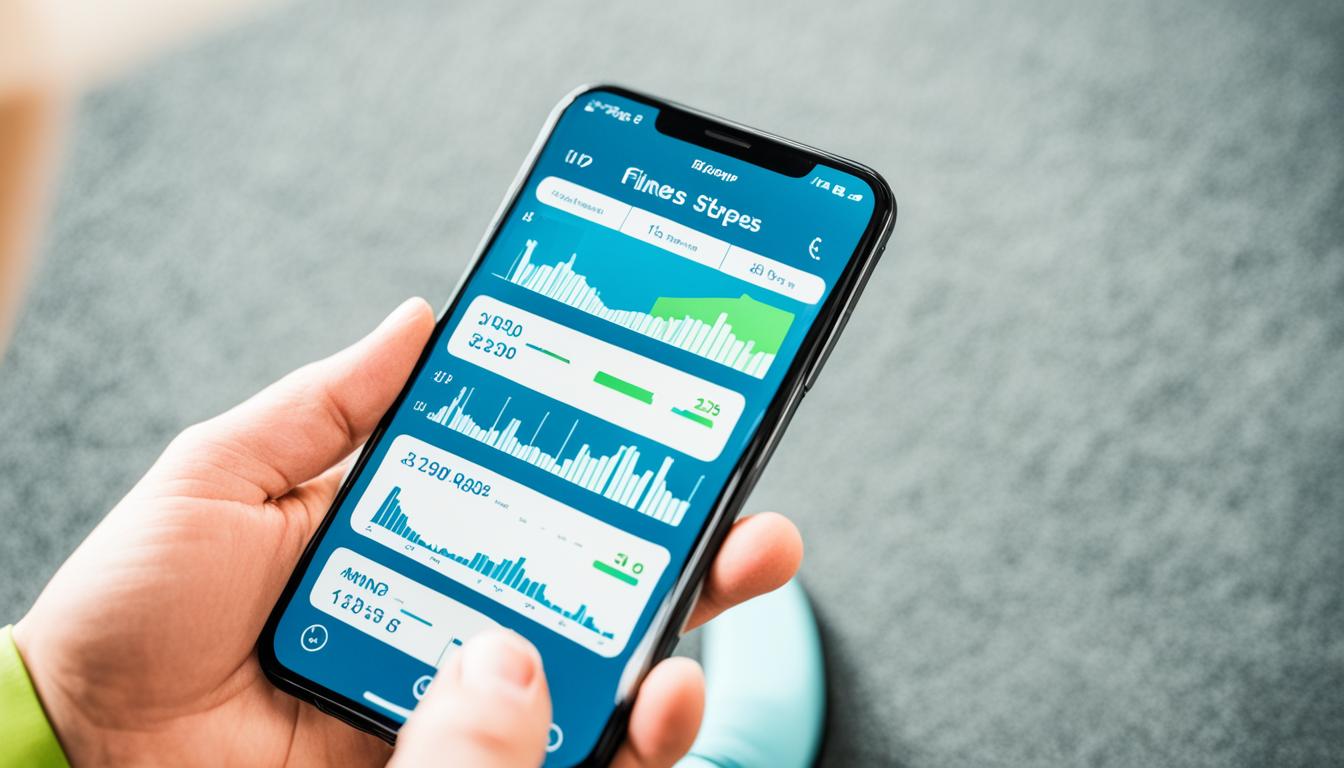
In today’s mobile-dependent world, optimizing smartphone internet use is essential to avoid excessive data charges. By monitoring data usage and setting limits, as well as leveraging Wi-Fi to minimize data consumption, you can enjoy a seamless online experience while staying within your data plan. It is also important to understand the impact of media downloads on your data allowance. Here are some strategies to help you optimize your smartphone internet use and avoid unexpected charges:
Monitoring Data Usage and Setting Limits
One of the key steps in optimizing your smartphone internet use is to monitor your data usage. Most smartphones have built-in tools that allow you to track your data consumption. By regularly checking your data usage, you can stay informed about your usage patterns and take necessary steps to avoid going over your data limit. Additionally, consider setting data usage limits or alerts on your device to receive notifications when you approach a certain threshold.
Tips for Using Wi-Fi to Minimize Data Consumption
Using Wi-Fi whenever available is an effective way to minimize data consumption on your smartphone. When connected to a Wi-Fi network, your device uses the internet provided by the network instead of consuming cellular data. To fully leverage Wi-Fi, ensure that you connect to secure and reliable networks, such as your home Wi-Fi or trusted public hotspots. Be cautious when connecting to open or unsecured networks, as they may pose security risks.
Here are some additional tips to minimize data consumption:
- Download large files and media content, such as apps, music, videos, and podcasts, while connected to Wi-Fi to avoid using your cellular data.
- Disable automatic app updates and downloads over cellular data in your device settings.
- Utilize offline modes in streaming apps to download content for offline viewing.
- Turn off background data for non-essential apps to prevent them from using data in the background.
Understanding the Impact of Media Downloads on Data Allowance
Media downloads, such as streaming music, videos, and high-resolution images, can significantly impact your data allowance. These downloads consume large amounts of data and can quickly deplete your monthly allocation. To mitigate the impact, consider adjusting the quality settings of your streaming apps to lower resolutions or enabling data-saving modes when available. Additionally, limit excessive media downloads and prioritize them for Wi-Fi use.
Optimizing smartphone internet use is crucial for avoiding excess data charges. By monitoring your data usage, using Wi-Fi whenever possible, and being mindful of media downloads, you can stay within your data limits and enjoy uninterrupted connectivity on your smartphone.
Comparing Mobile Networks: Coverage and Speed Considerations
When it comes to choosing the right mobile network for your smartphone internet connectivity, evaluating network coverage and speed is crucial. Comparison shopping allows you to make an informed decision that aligns with your needs and preferences.
Firstly, consider mobile network coverage. A network with wider coverage ensures that you have a reliable internet connection wherever you go. Research and compare the coverage maps of different mobile networks in your area to determine which provides the best coverage for your usual locations and travel destinations.
Alongside coverage, network speed is an essential factor to consider. Faster network speeds enable smoother streaming, faster downloads, and overall better performance. You can refer to online resources and customer reviews to get an idea of the average network speeds offered by different providers in your area.
Ultimately, finding the right mobile network involves striking a balance between coverage and speed. Consider your priorities and usage patterns. If you frequently travel or reside in areas with limited coverage, prioritizing a network with wider coverage is key. On the other hand, if you heavily rely on data-intensive tasks such as streaming or online gaming, prioritizing a network with faster speeds may be more beneficial. Take the time to compare and evaluate different mobile networks based on coverage and speed considerations, so you can make an informed decision that suits your specific needs.
Source Links
Are Smartphones Addictive? Uncover the Truth.
Smartphones have become an indispensable part of our daily lives, connecting us to a world of information, communication, and entertainment at our fingertips. But amidst the convenience and connectivity, a growing concern looms – are smartphones addictive?
In this article, we will delve deep into the subject of smartphone addiction and uncover the truth behind this phenomenon. By exploring the science, research, and real-life consequences of excessive smartphone use, we aim to shed light on whether smartphones truly hold an addictive power over us or if this belief is simply a myth.
Throughout this journey, we will examine the psychological, sociocultural, and neurological aspects of smartphone addiction to gain a comprehensive understanding of its potential risks and explore strategies for managing smartphone use. So, let’s dive in and separate fact from fiction in the world of smartphone addiction.
Key Takeaways:
- Smartphone addiction is a growing concern in today’s digital era.
- This article aims to uncover the truth behind smartphone addiction.
- We will explore the psychological, sociocultural, and neurological aspects of smartphone addiction.
- Understanding the potential risks of excessive smartphone use is crucial for managing smartphone addiction.
- Strategies for managing smartphone use and finding a healthy balance will be discussed in this article.
The Science of Smartphone Attachment
In this section, we will explore the science behind smartphone attachment and delve into the psychological and emotional factors that contribute to smartphone dependency. We will also differentiate between problematic use and addiction, outlining the behaviors and consequences associated with each.
Defining Problematic Use vs. Addiction
It is essential to distinguish between problematic smartphone use and addiction. Problematic use refers to excessive or uncontrolled smartphone usage that may interfere with daily functioning and have negative consequences. It may include behaviors such as constantly checking the device, neglecting responsibilities, and experiencing distress when unable to access the smartphone.
On the other hand, addiction involves a compulsive and uncontrollable need to use the smartphone, regardless of the negative impact on one’s life. It is characterized by an inability to cut back or stop smartphone use, withdrawal symptoms when attempting to do so, and a preoccupation with the device that disrupts relationships and activities.
Understanding the distinction between problematic use and addiction is crucial for identifying the level of intervention needed and providing appropriate support to individuals struggling with smartphone dependency.
Understanding Attachment and Separation Anxiety
Attachment theory, initially developed by John Bowlby, provides insights into the emotional bonds individuals form with their smartphones. Just as infants form attachments to their caregivers, individuals may develop a sense of attachment to their smartphones, considering them a source of comfort, connection, and security.
This attachment may lead to separation anxiety, where individuals experience distress or anxiety when they are away from their smartphones or unable to use them. The fear of missing out on social interactions, updates, or important information can contribute to this anxiety, intensifying the attachment and reinforcing smartphone dependency.
The concept of attachment and separation anxiety sheds light on the emotional and psychological factors that play a significant role in the development and maintenance of smartphone attachment and problematic use.
Table: Behaviors and Consequences Associated with Problematic Smartphone Use and Addiction
| Problematic Smartphone Use | Smartphone Addiction |
|---|---|
| Excessive checking of the device | Compulsive and uncontrollable need to use the smartphone |
| Neglect of responsibilities and obligations | Inability to cut back or stop smartphone use |
| Interference with relationships and activities | Withdrawal symptoms when attempting to reduce use |
| Distress when unable to access the smartphone | Preoccupation with the device |
By understanding the science of smartphone attachment, as well as the distinction between problematic use and addiction, we can gain valuable insights into the complexities of smartphone dependency. This knowledge can guide the development of effective strategies for managing smartphone use and promoting a healthier relationship with these devices.
Deep Dive into Smartphone Addiction Research
In this section, we will conduct a deep dive into the research surrounding smartphone addiction. By analyzing the methodologies and potential pitfalls of addiction studies, we can gain a better understanding of the strengths and limitations of current research on smartphone addiction. Furthermore, we will critically assess the diagnosis criteria for addiction to evaluate their applicability to smartphone addiction.
The field of smartphone addiction research is rapidly evolving, with numerous studies examining the psychological, sociological, and neurological aspects of this phenomenon. However, it is essential to approach the research with a critical eye, considering the various methodologies used and the potential bias or limitations that may impact the findings.
Methodologies and Pitfalls of Addiction Studies
One of the challenges in smartphone addiction research is the absence of standard methodologies across studies. Different research approaches, such as surveys, interviews, and laboratory experiments, are employed, which can lead to variations in results and difficulty in comparing findings. Additionally, many studies rely on self-reported data, which can be influenced by social desirability bias or inaccurate memory recall.
Another potential pitfall in addiction studies is the reliance on cross-sectional designs that capture a snapshot of data at a specific point in time. Longitudinal studies, which track participants over an extended period, can provide more insights into the development and progression of smartphone addiction. However, conducting longitudinal studies can be challenging due to time and resource constraints.
Analyzing the Diagnosis Criteria for Addiction
Diagnosing smartphone addiction is still a subject of debate among researchers and mental health professionals. The criteria used for diagnosing smartphone addiction are often adapted from existing frameworks for substance addictions or behavioral addictions, such as gambling disorder. However, it is crucial to consider the unique characteristics of smartphone use and the potential differences in addictive behaviors compared to substance or behavioral addictions.
A commonly used framework for diagnosing addiction is the DSM-5 (Diagnostic and Statistical Manual of Mental Disorders, Fifth Edition). However, the applicability of the DSM-5 criteria to smartphone addiction has been questioned due to the distinct nature of smartphone use and its integration into daily life activities. Some argue that a new diagnostic framework specifically tailored to smartphone addiction is needed to capture its unique aspects and consequences accurately.
By examining addiction studies’ methodologies and critiquing the diagnosis criteria for addiction, we can gain a more comprehensive understanding of smartphone addiction. This knowledge will contribute to the ongoing dialogue surrounding the definition, assessment, and treatment of smartphone addiction.
Assessing the Sociocultural Impact on Smartphone Usage

In the modern digital age, smartphones have become an integral part of our daily lives, enabling us to stay connected, access information, and engage with the world around us. However, the sociocultural impact of smartphone usage extends beyond mere convenience. This section will explore how sociocultural factors influence smartphone usage and shape our relationship with these devices.
Cultural Influences on Technology Use
Culture plays a significant role in shaping our attitudes and behaviors towards technology, including smartphones. Different cultures may have varying degrees of acceptance, usage patterns, and norms surrounding smartphone use. For example, in some cultures, smartphones are seen as essential tools for communication and social connection, while in others, they might be viewed as distractions or even symbols of status.
Cultural values, such as the importance of individuality, collectivism, or social harmony, can also influence how smartphones are used. These values may shape the types of apps and features preferred, the frequency and duration of smartphone use, and the balance between virtual and face-to-face interactions.
Furthermore, cultural beliefs and practices surrounding privacy, etiquette, and social norms can impact the ways in which individuals interact with their smartphones. For instance, some cultures may prioritize privacy and limit smartphone use in certain settings, such as during meals or in religious ceremonies.
By considering cultural influences on technology use, we can gain a deeper understanding of how society and individuals shape their smartphone behaviors.
Social Identity and Virtual Connections
Smartphones play a crucial role in the formation and maintenance of social identities, providing users with an avenue for self-expression and connection with like-minded individuals. Through social media platforms, messaging apps, and online communities, smartphones facilitate virtual connections that transcend geographical boundaries.
By curating online personas, individuals can construct and present their identities to the world, expressing their interests, values, and beliefs. These virtual connections offer opportunities for self-affirmation, validation, and social support, which are all essential for forming a sense of belonging and enhancing social identity.
However, the virtual nature of these connections can also have implications for smartphone addiction. Excessive reliance on virtual interactions may lead to a sense of isolation and detachment from real-world relationships, jeopardizing social and emotional well-being.
It is important to recognize the role of social identity and virtual connections in smartphone usage and strike a balance between online and offline social interactions.
The Psychological Grip of Smartphones
In today’s digital age, smartphones have become essential companions in our daily lives. But have you ever wondered why it’s so hard to put them down? This section will explore the psychological grip that smartphones have on us, shedding light on the role of dopamine and how social media platforms enhance addiction.
The Role of Dopamine in Smartphone Use
Dopamine, often referred to as the “feel-good” neurotransmitter, plays a crucial role in our brain’s reward system. When we engage in activities that bring us pleasure or reward, such as using our smartphones, dopamine is released, creating a sense of enjoyment and reinforcing the behavior.
Smartphone features like notifications, likes, and messages trigger dopamine release, making us feel good and encouraging us to seek further engagement. This reinforcement loop strengthens the psychological grip of smartphones and can lead to excessive use and addiction.
How Social Media Platforms Enhance Addiction
Social media platforms are designed to maximize user engagement and keep us coming back for more. They employ various psychological tactics that further enhance the addictive nature of smartphone use.
One example is the use of infinite scrolling, which creates an endless stream of content, feeding our need for novelty and making it difficult to disengage. Additionally, features like auto-play videos, notifications, and personalized algorithms cater to our individual preferences, increasing the likelihood of prolonged usage.
Moreover, social media platforms foster a sense of social validation through likes, comments, and followers, triggering dopamine release and creating a desire for more online interactions. This constant reinforcement and social stimulation contribute to the addictive grip of smartphones.
By understanding the role of dopamine and the design tactics employed by social media platforms, we can better recognize and address the psychological grip of smartphones. In the next section, we will explore the behavioral economics behind smartphone apps and their impact on addiction.
Understanding the Behavioral Economics Behind Apps

Smartphone apps have become an integral part of our daily lives, offering a wide range of functionalities and entertainment. But have you ever wondered why some apps are so addictive? This section will explore the behavioral economics behind smartphone apps and delve into the mechanisms that contribute to their impact on addiction.
The Science of Reward Prediction Errors
One of the key factors driving the addictive nature of smartphone apps is the science of reward prediction errors. In simple terms, our brains are wired to seek out rewards and avoid negative outcomes. When using apps, our brains make predictions about the rewards we will receive, such as social interaction, entertainment, or achievement. However, these predictions don’t always match reality, leading to reward prediction errors.
Research has shown that reward prediction errors can trigger a release of dopamine, a neurotransmitter associated with pleasure and motivation. When an app delivers a reward that is better than expected, dopamine levels spike, reinforcing the behavior and increasing the likelihood of continued app usage. This creates a cycle of anticipation, reward, and craving that keeps users engaged and hooked on their favorite apps.
Variable Reward Schedules and User Engagement
Another important aspect of behavioral economics in app design is the use of variable reward schedules. Rather than providing rewards at a fixed interval, apps often employ random or variable reward schedules. This technique, inspired by the principles of operant conditioning, maximizes user engagement and encourages addictive behaviors.
Variable reward schedules create an element of uncertainty and anticipation, making users more likely to keep using the app in the hope of receiving a reward. This can be seen in popular apps like social media platforms and mobile games, where users receive notifications, likes, or in-game rewards unpredictably. The unpredictability of these rewards makes them more enticing and reinforces the addictive nature of the app.
By understanding the behavioral economics behind apps, we can gain insight into the strategies used to keep us hooked. It’s important to be mindful of these techniques and develop healthy habits and boundaries to maintain a balanced and responsible approach to smartphone app usage.
Are smartphones addictive?
After exploring the science, research, and practical consequences of excessive smartphone use, we can now directly address the question of whether smartphones are addictive. This topic has been the subject of much debate, with strong arguments on both sides. However, drawing from the scientific evidence presented in earlier sections, we can provide a comprehensive answer.
Smartphones have undoubtedly become an integral part of our daily lives, offering convenience, connectivity, and opportunities for productivity. However, their addictive potential cannot be ignored. The design of smartphones, coupled with the captivating nature of apps and social media platforms, has created an environment that fosters addictive behaviors.
The omnipresence of smartphones and the constant connectivity they offer have led to a phenomenon known as “phantom vibration syndrome,” where individuals experience the perception of their phone vibrating in the absence of any notification. This physical and psychological response exemplifies the extent to which smartphones have become ingrained in our daily routines.
The addictive nature of smartphones is further intensified by the role of dopamine, a neurotransmitter associated with pleasure and reward. As we engage with our smartphones, activities such as receiving notifications, likes, or messages trigger dopamine release in the brain, reinforcing the addictive cycle.
Furthermore, social media platforms employ behavioral psychology techniques to enhance addiction. Through variable reward schedules, notifications, and the infinite scroll feature, these platforms stimulate our desire for more, creating an urge to constantly check our smartphones for updates and validation.
While smartphones themselves are not inherently addictive substances like drugs or alcohol, they can still elicit addictive behaviors and have a significant impact on our well-being. Excessive smartphone use has been linked to a range of negative consequences, including decreased productivity, impaired cognitive function, anxiety, depression, and sleep disturbances.
Despite the addictive nature of smartphones, it is essential to note that not everyone who uses smartphones will develop an addiction. Factors such as individual susceptibility, underlying mental health conditions, and the presence of coping mechanisms can influence one’s vulnerability to smartphone addiction.
As we continue to navigate the digital age, it is crucial to maintain a healthy and mindful relationship with our smartphones. By implementing strategies for managing smartphone use, setting boundaries, and seeking support when needed, we can strike a balance between utilizing the benefits of smartphones and mitigating their addictive potential.
Practical Consequences of Excessive Smartphone Use

In today’s digital age, excessive smartphone use has become a prevalent concern with practical consequences that affect both our mental and physical health. Understanding these consequences is essential for making informed decisions about our smartphone usage. This section will explore the effects on mental health, including anxiety and depression, as well as the physical health risks, such as eye strain and text neck.
Effects on Mental Health: Anxiety and Depression
Excessive smartphone use has been linked to negative mental health outcomes, particularly increased anxiety and depression. Constant engagement with social media, constant communication, and feelings of fear of missing out (FOMO) can contribute to heightened levels of anxiety.
Furthermore, the compulsive need to check notifications and constantly be connected can disrupt sleep patterns, leading to sleep deprivation, which is closely associated with depression. The dopamine rush from receiving notifications and the addictive nature of social media platforms can create a dependency that further exacerbates these mental health issues.
Physical Health Risks: Eye Strain and Text Neck
Besides the mental health effects, excessive smartphone use can also have physical health risks. One of the common physical consequences is eye strain or digital eye strain, which includes symptoms such as eye fatigue, dry eyes, and blurred vision. Staring at small screens for extended periods and the prolonged exposure to blue light emitted by smartphones can strain the eyes and lead to discomfort.
Another physical risk associated with excessive smartphone use is text neck. Text neck refers to the forward head posture and the strain on the neck and spine caused by constantly looking down at a smartphone. This can lead to chronic pain, muscle imbalances, and even spinal issues.
It is crucial to be aware of these practical consequences and strive for a healthy balance between smartphone usage and other aspects of life. By taking proactive measures to manage our smartphone use, such as setting designated screen-free times and practicing digital detoxes, we can mitigate the negative effects and improve our overall well-being.
Neurological Changes Induced by Smartphone Dependency
Excessive smartphone use has been found to have a significant impact on brain structure and function, leading to various neurological changes. Research has shown that prolonged smartphone dependency can alter the brain’s chemistry and wiring, resulting in potential long-term effects on cognitive abilities and neurological health.
One of the key findings in neurological studies is the association between smartphone use and decreased gray matter volume in certain brain regions. Gray matter is responsible for processing information, and its decline has been linked to decreased cognitive abilities, including memory, attention, and decision-making.
Moreover, excessive smartphone use has been shown to affect neurotransmitter systems in the brain, particularly dopamine. Dopamine is a neurotransmitter associated with pleasure and reward, and its dysregulation can lead to addictive behaviors. Smartphone dependency can disrupt the natural balance of dopamine in the brain, contributing to a cycle of craving and reinforcement.
“The constant stimulation we receive from our smartphones can alter our brain’s reward system, making us more susceptible to addiction,” says Dr. Thomas Johnson, a neuroscientist at Harvard Medical School.
Furthermore, prolonged smartphone use has been found to impact the brain’s connectivity and neural networks. Studies have shown alterations in the white matter integrity, which affects the efficiency of information transmission between brain regions. These changes in connectivity may contribute to deficits in cognitive functioning and emotional regulation.
Understanding the neurological changes induced by smartphone dependency is crucial for addressing the potential risks associated with excessive smartphone use. Further research is necessary to explore the long-term effects of smartphone addiction on brain health and to develop effective strategies for managing smartphone dependency.
Examining the Social Paradigm Shift Due to Smartphones

In today’s hyper-connected world, smartphones have ushered in a social paradigm shift, transforming the way we interact, communicate, and build relationships. The rise of smartphones and the proliferation of digital platforms have created a hyper-social digital environment, blurring the boundary between our online and offline lives.
Navigating Our Hyper-Social Digital Environment
In this hyper-social digital environment, social media platforms, messaging apps, and online communities have become integrated into our daily routines. We find ourselves constantly connected, scrolling through news feeds, liking and commenting on posts, and sharing our thoughts and experiences with a vast network of friends, acquaintances, and even strangers.
As we navigate this digital landscape, we are confronted with new challenges and complexities. The ease of access to information brings both advantages and disadvantages. It allows us to stay informed, connect with diverse perspectives, and engage in meaningful discussions. However, it also exposes us to misinformation, echo chambers, and the pressure to maintain a carefully curated online presence.
Moreover, the proliferation of smartphones has blurred the boundaries between work and personal life. With constant notifications and the expectation of responsiveness, we find it increasingly difficult to disconnect and find moments of solitude. Our attention is constantly divided, making it challenging to focus on deep, meaningful interactions.
Impacts on Interpersonal Relationships and Communication
The hyper-social digital environment created by smartphones has undoubtedly affected our interpersonal relationships and communication patterns. While smartphones enable us to stay connected with loved ones, regardless of geographical barriers, they also introduce new dynamics that can impact the quality of our relationships.
One of the key challenges is finding a balance between online and offline interactions. The constant connectivity offered by smartphones can lead to a decreased emphasis on face-to-face communication, with many conversations happening through screens rather than in person. This shift can affect the depth and authenticity of our relationships, as it may be harder to convey emotions and fully understand someone’s intentions through digital channels alone.
In addition, the hyper-social digital environment can also create feelings of comparison, envy, and social pressure. The highlight reels presented on social media can lead to unrealistic expectations and a sense of inadequacy, impacting our self-esteem and overall well-being. Moreover, the ability to easily access a wide network of people can sometimes lead to shallower connections and a decreased sense of community.
It’s important to note that while smartphones have brought about a social paradigm shift, they are a tool that can be used in both positive and negative ways. With conscious and mindful use, we can harness the benefits of smartphones and the hyper-social digital environment while preserving the depth and quality of our interpersonal relationships.
| Challenges in a Hyper-Social Digital Environment | Impact on Interpersonal Relationships and Communication |
|---|---|
| Constant connectivity and the pressure to always be online | Decreased emphasis on face-to-face communication |
| Information overload and the spread of misinformation | Shallower connections and decreased sense of community |
| Comparison, envy, and social pressure | Unrealistic expectations and decreased authenticity |
Smartphone Use: The Fine Line Between Utility and Overindulgence
Smartphones have undoubtedly become an integral part of our daily lives, offering a wide range of functionalities that enhance our productivity, communication, and entertainment. However, there is a fine line between utilizing smartphones for their intended purposes and overindulging in their constant connectivity. It is essential to strike a balance and be mindful of the potential drawbacks that come with excessive smartphone use.
Drawbacks of Constant Connectivity
Constant connectivity, while offering convenience, can have detrimental effects on our well-being and overall quality of life. The continuous stream of notifications, alerts, and messages can lead to feelings of overwhelm, distraction, and even anxiety. Our constant engagement with our smartphones can make it difficult to disconnect and find moments of true relaxation and mental clarity. Additionally, the temptation to check our phones incessantly can hinder our ability to focus on important tasks, impacting our productivity and overall performance.
Cognitive Changes in Smartphone-Heavy Users
Research suggests that excessive smartphone use can lead to cognitive changes. The constant engagement with smartphones and the multitasking nature of smartphone activities can impair our ability to concentrate and retain information. Moreover, studies have shown that heavy smartphone users may experience a decline in memory and problem-solving skills. The constant stimulation provided by smartphones, combined with the fragmented attention it requires, can significantly impact our cognitive abilities over time.
To illustrate the cognitive changes induced by smartphone-heavy usage, a study conducted by researchers at the University of Texas at Austin found that the presence of smartphones, even when unused, can reduce cognitive capacity. The study participants who had their phones in another room performed significantly better on cognitive tasks compared to those who had their phones within reach. This indicates the potential cognitive consequences of constant smartphone connectivity.
It is important to be aware of these cognitive changes and consider the effects of smartphone use on our mental capabilities. By recognizing the potential risks and consequences, we can make conscious decisions about our smartphone usage and prioritize our cognitive well-being.
Regulatory and Industry Perspective on Smartphone Use

In order to address concerns regarding smartphone addiction, both regulatory bodies and industry stakeholders have taken steps to promote responsible smartphone use. These efforts aim to protect users and ensure that smartphones are used in a safe and healthy manner.
Regulatory bodies have recognized the need to establish guidelines and regulations to mitigate the risks associated with excessive smartphone use. They have implemented policies that aim to raise awareness about smartphone addiction and provide support for individuals struggling with this issue.
Industry stakeholders, on the other hand, have made significant efforts to develop features and tools that encourage responsible smartphone use. Smartphone manufacturers, app developers, and social media platforms have implemented strategies such as screen time monitoring, app usage limits, and digital well-being initiatives. These measures aim to empower users to manage their smartphone use effectively and maintain a healthy balance.
Through collaboration between regulatory bodies and industry stakeholders, the goal is to create a regulatory environment that promotes responsible smartphone use while still allowing individuals to enjoy the benefits of smartphone technology.
“It is important for regulations and industry practices to strike a balance between protecting users from addiction and preserving the freedom to use smartphones for their intended purposes.”
By considering the regulatory and industry perspectives on smartphone use, individuals can make informed decisions about their smartphone habits and take advantage of the resources available to manage smartphone addiction effectively.
Strategies for Managing Smartphone Use and Potential Addiction
Psychological Interventions and Behavioral Therapy
To effectively manage smartphone use and potential addiction, psychological interventions and behavioral therapy techniques can be highly beneficial. These approaches aim to address the underlying psychological factors and behavioral patterns associated with smartphone addiction.
Psychological interventions, such as cognitive-behavioral therapy (CBT), can help individuals develop healthier habits and coping mechanisms to reduce smartphone dependency. CBT focuses on identifying and challenging negative thoughts, emotions, and behaviors related to smartphone use. By working with a therapist, individuals can gain insight into their triggers and develop strategies to manage problematic smartphone behaviors.
Behavioral therapy techniques, such as setting goals and rewards, can also be effective in modifying smartphone use patterns. By creating a structured plan and setting achievable goals for reducing screen time, individuals can gradually decrease their reliance on smartphones. Rewarding oneself for meeting these goals can provide additional motivation and reinforcement to maintain healthy smartphone habits.
Creating Healthy Digital Boundaries
In addition to psychological interventions and therapy, creating healthy digital boundaries is essential for managing smartphone use and preventing addiction. Here are some practical tips:
- Set specific time limits for smartphone use each day
- Designate device-free zones or periods, such as during meals or before bed
- Turn off non-essential notifications to minimize distractions
- Practice mindful smartphone usage by being fully present in the moment
- Engage in alternative activities, such as hobbies or exercise, to reduce reliance on smartphones
- Establish healthy sleep routines by avoiding smartphone use before bedtime
By implementing these strategies, individuals can regain control over their smartphone use, minimize the risk of addiction, and maintain a healthy balance in their digital lives.









